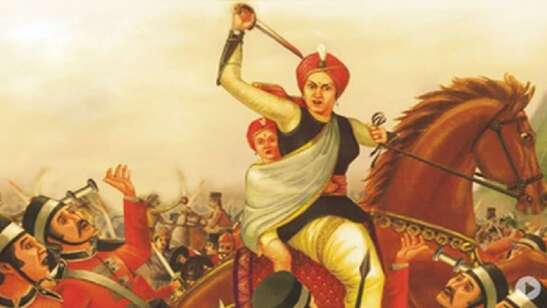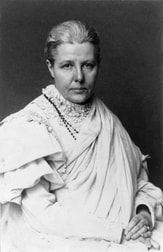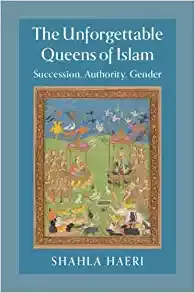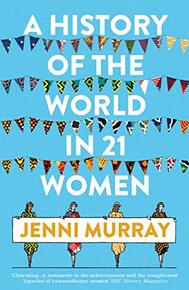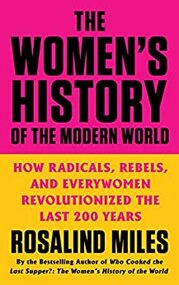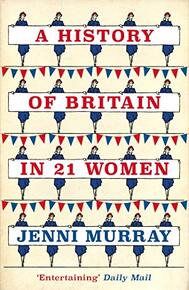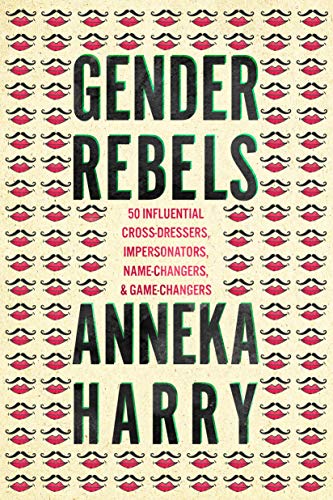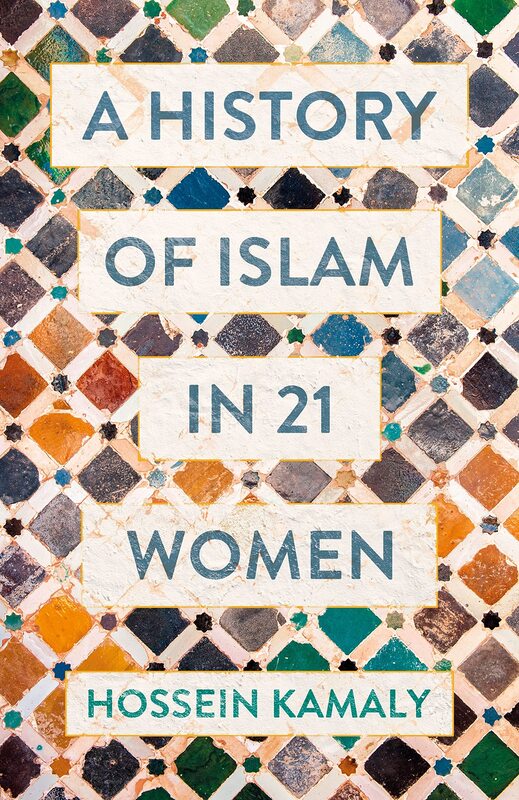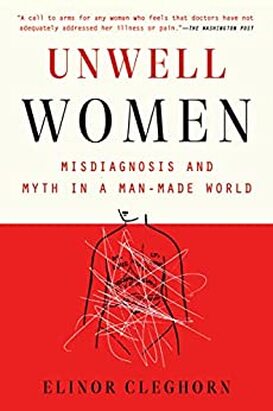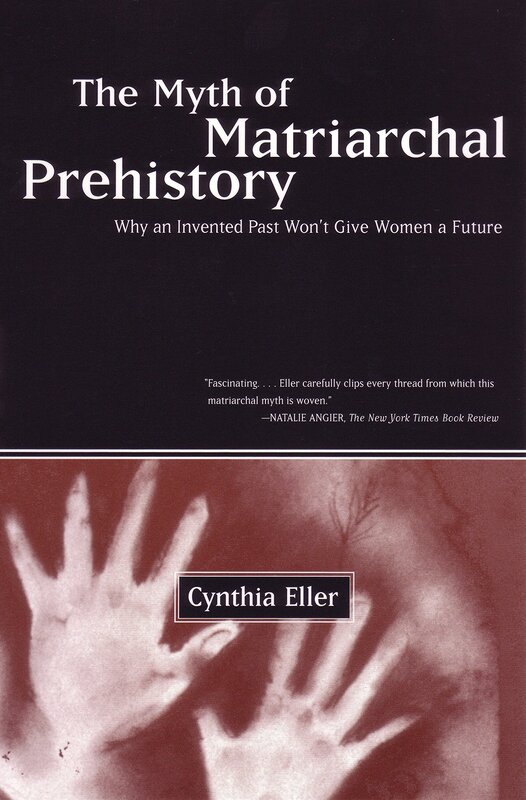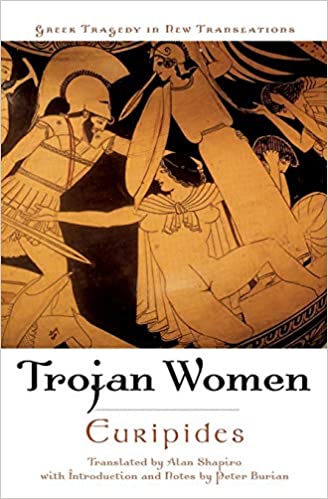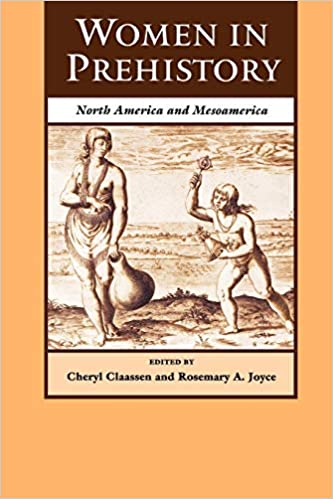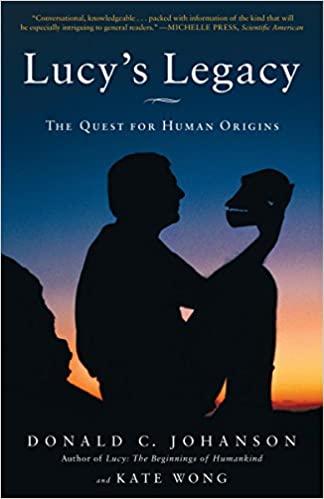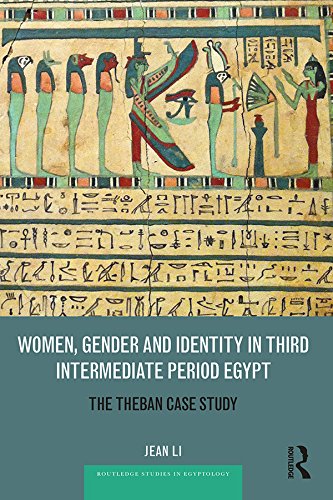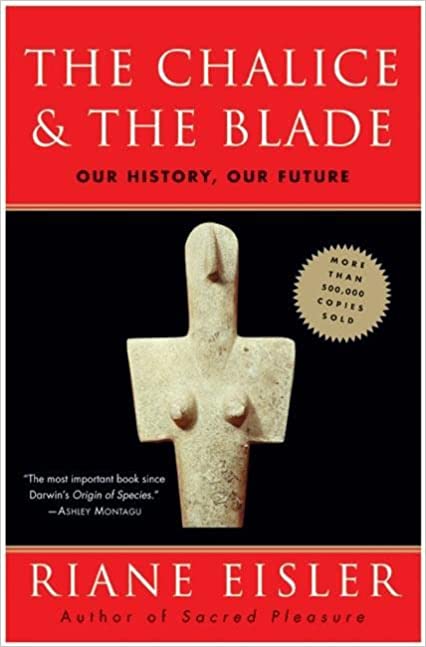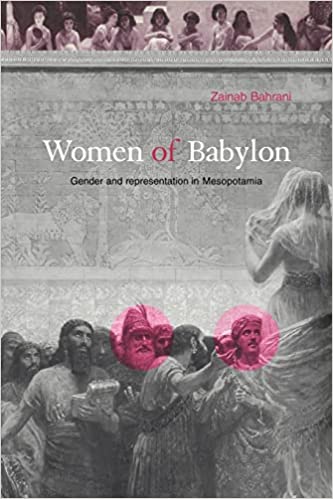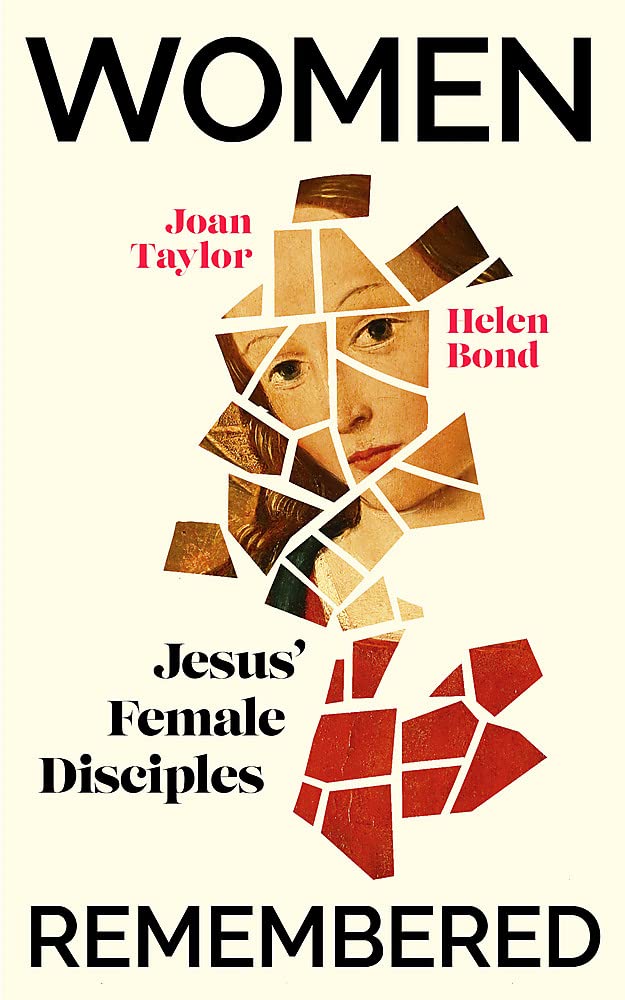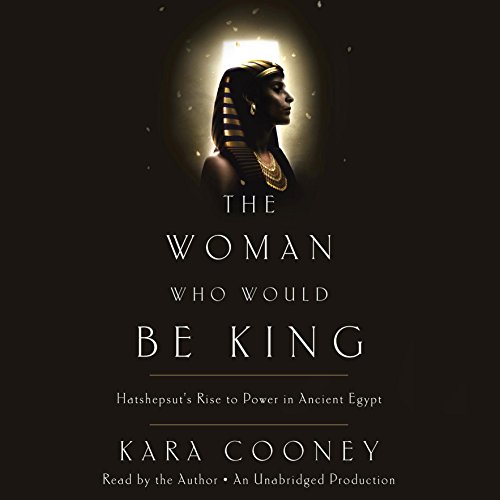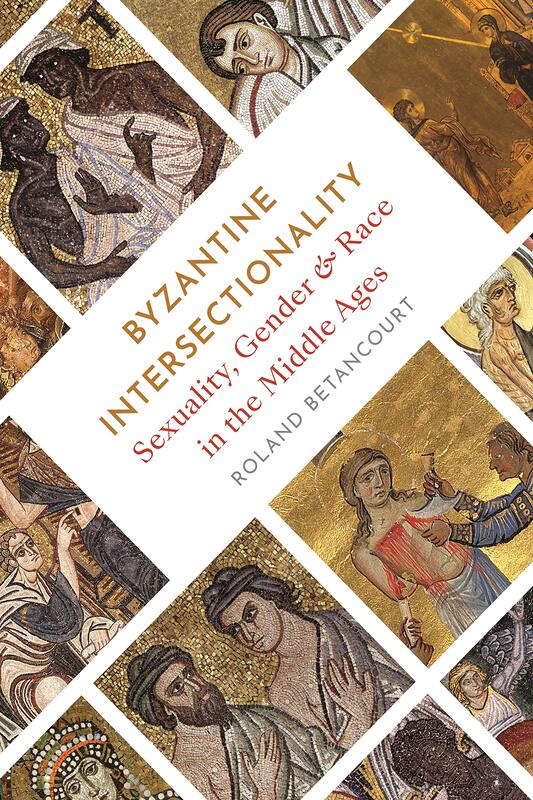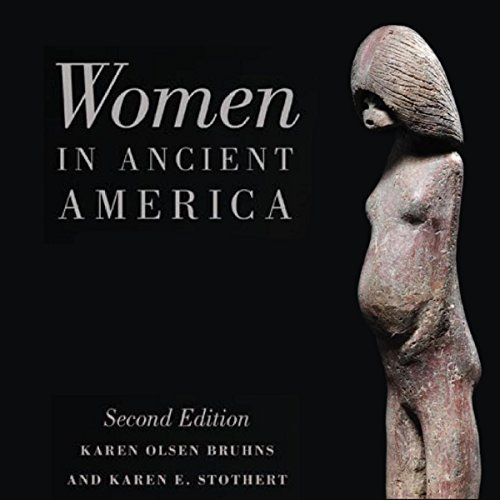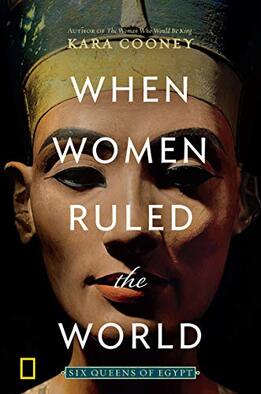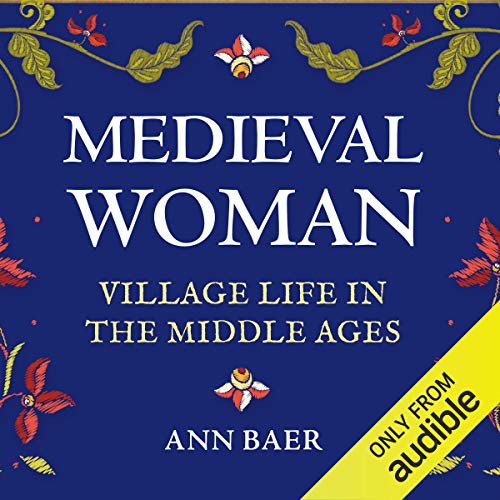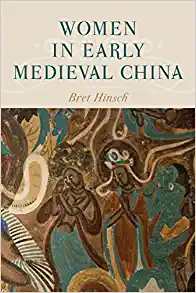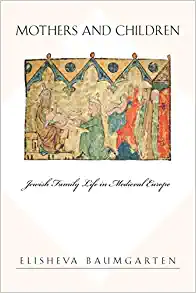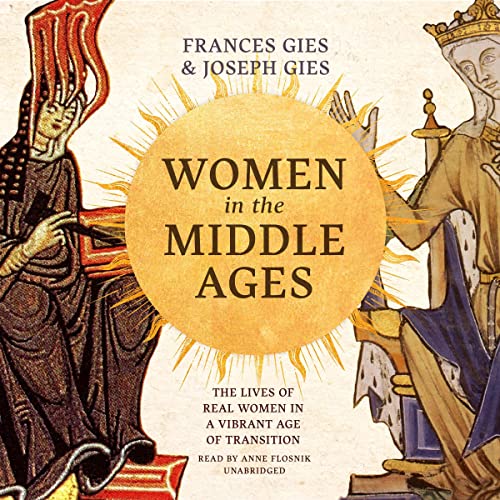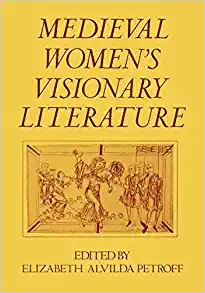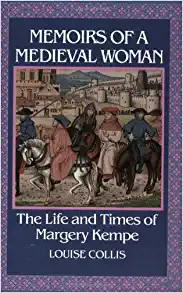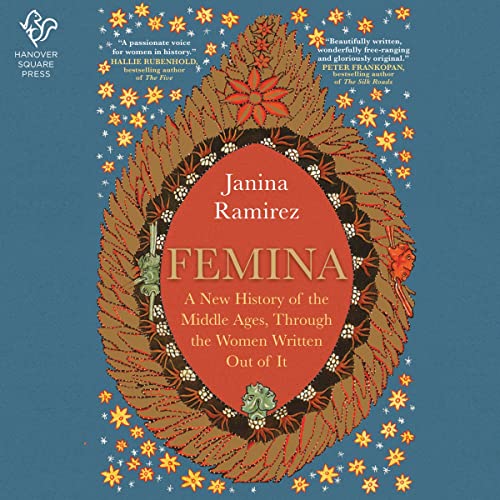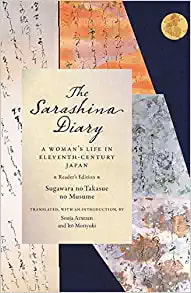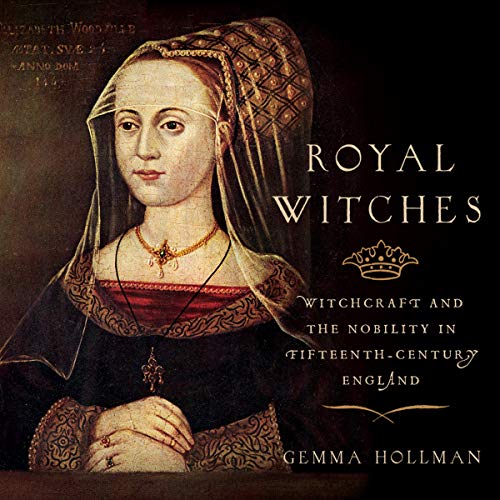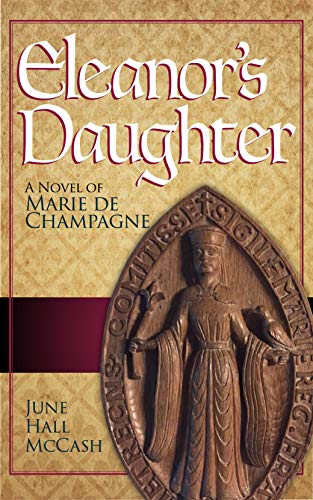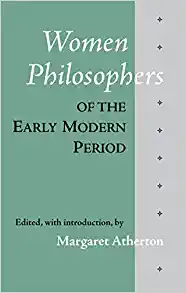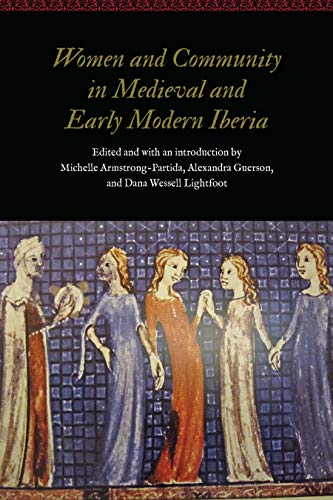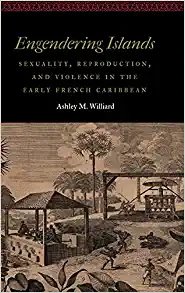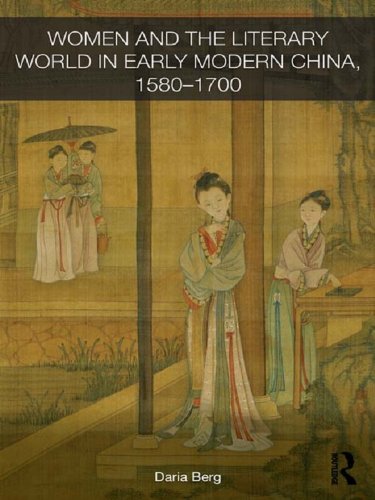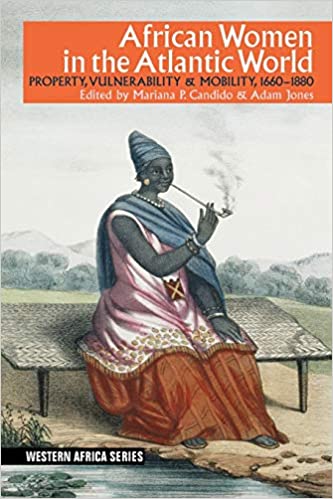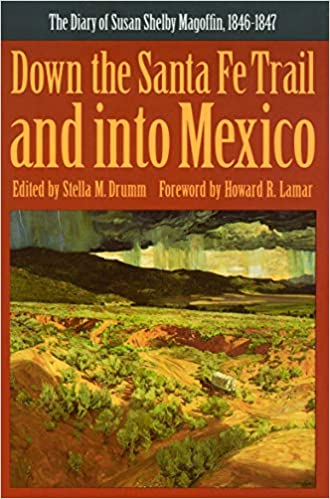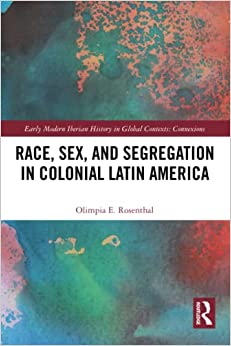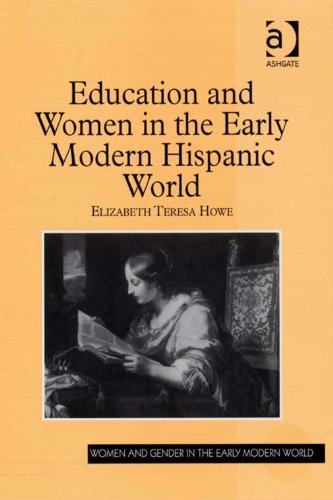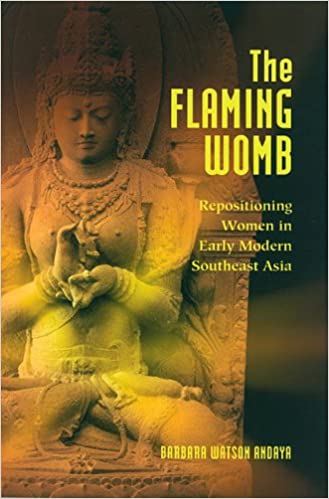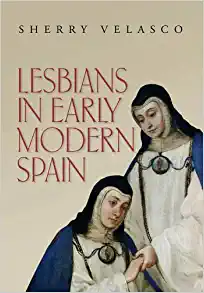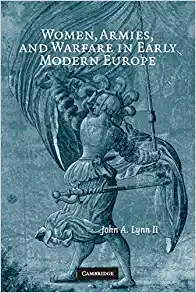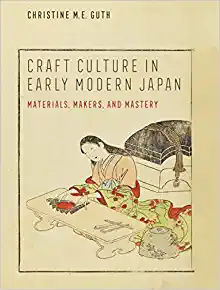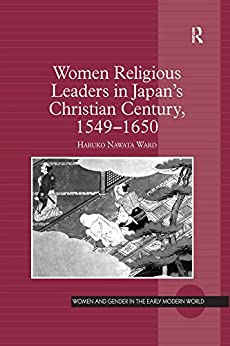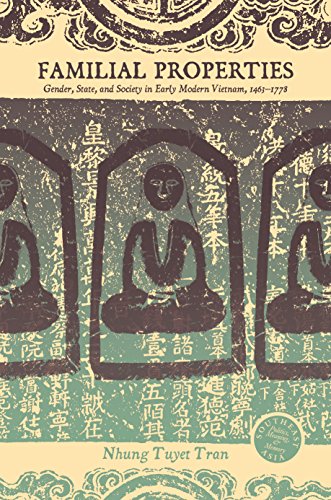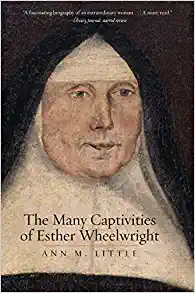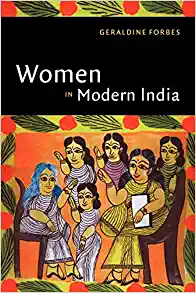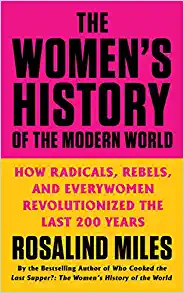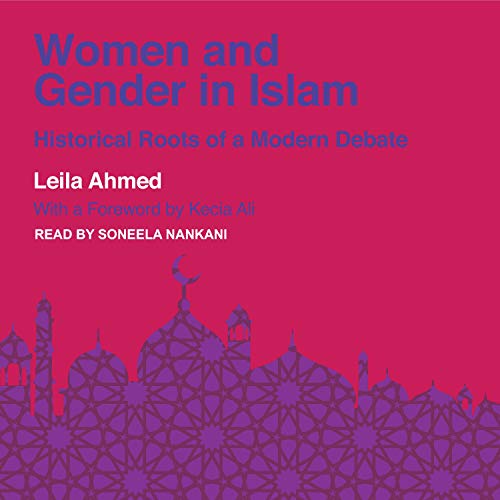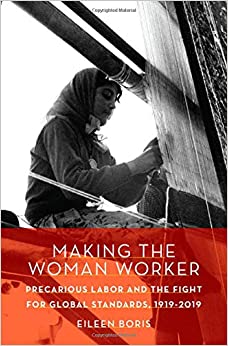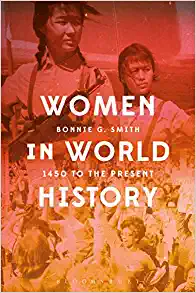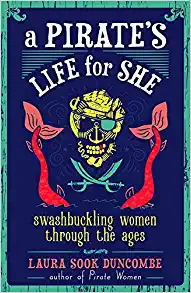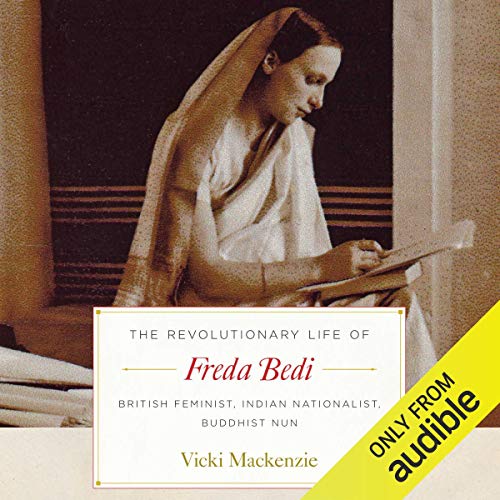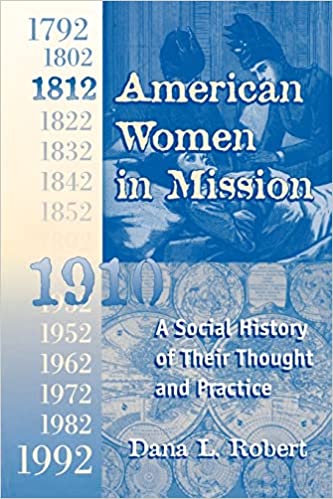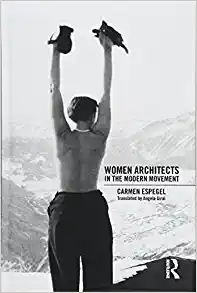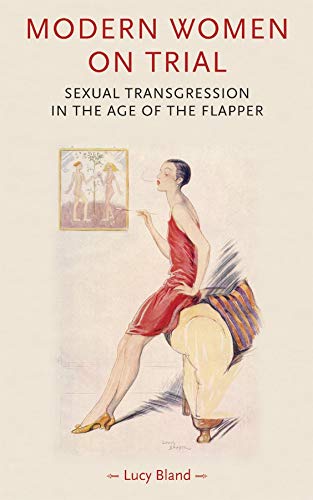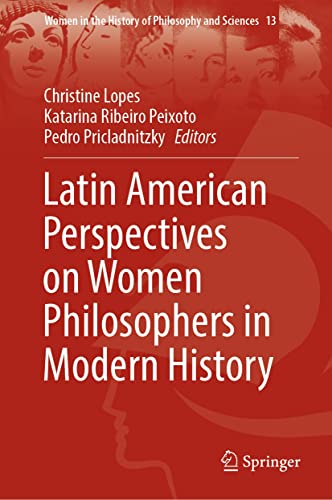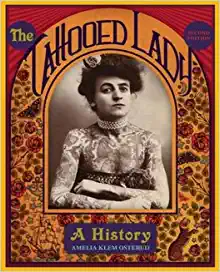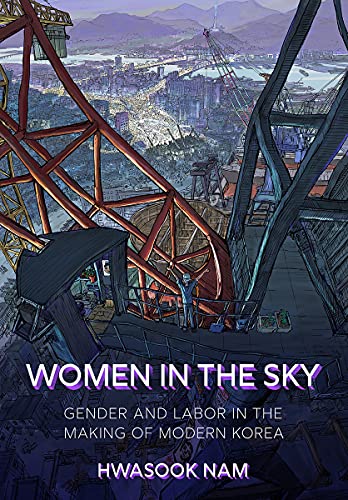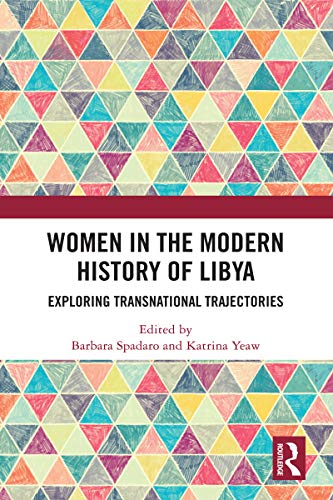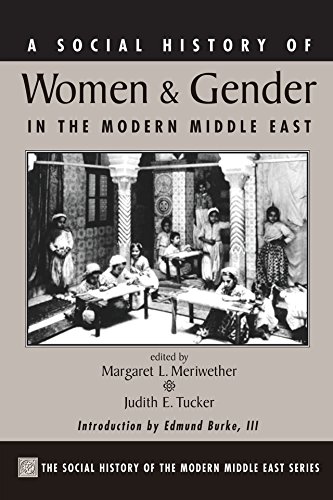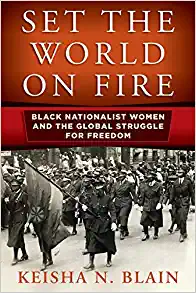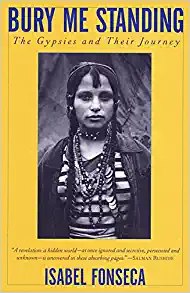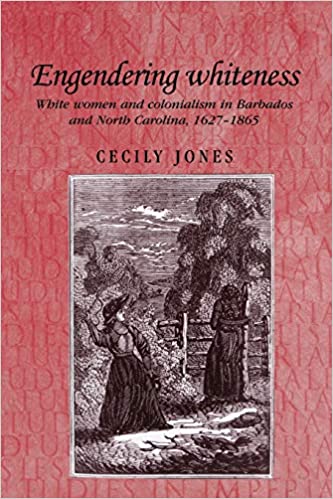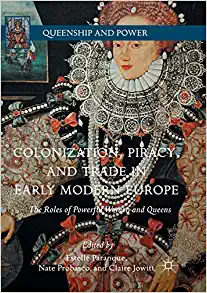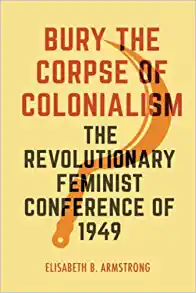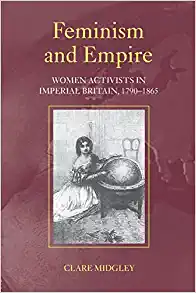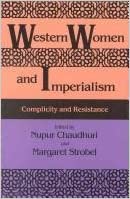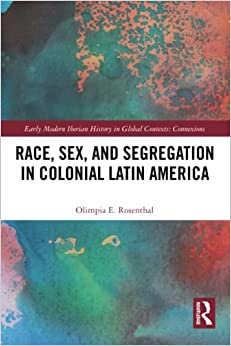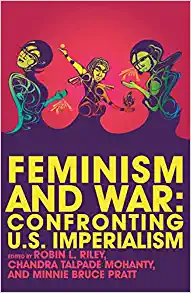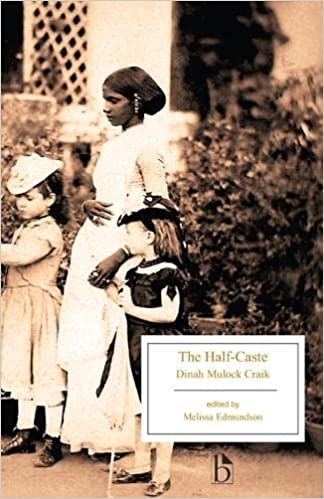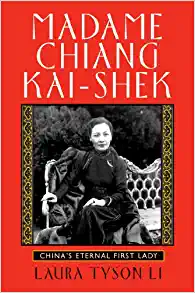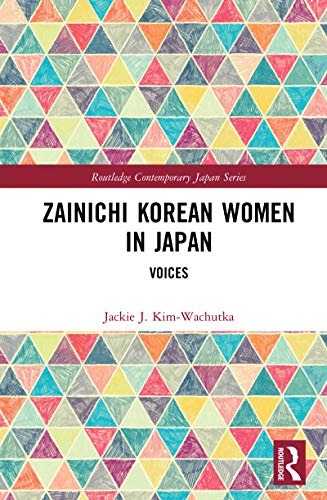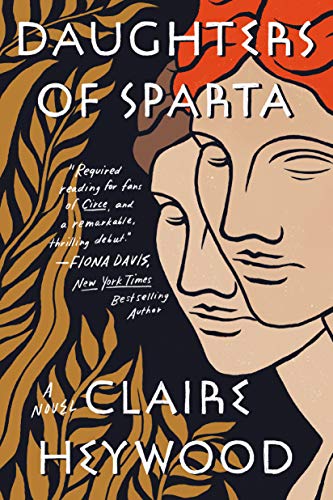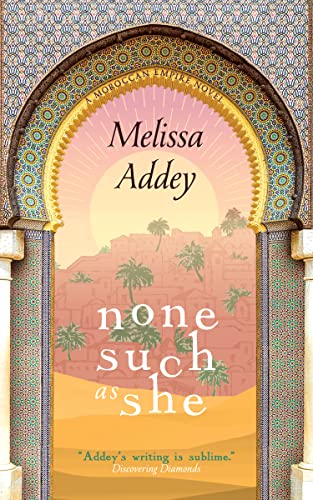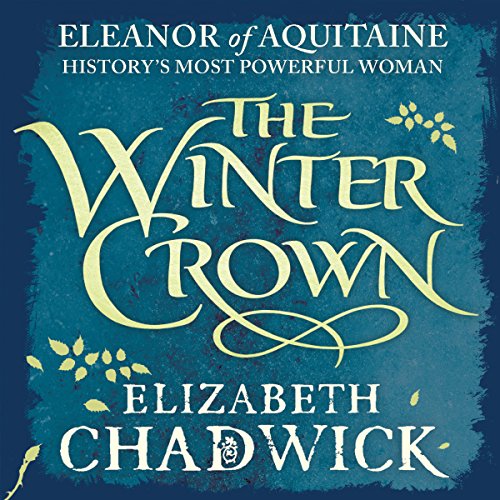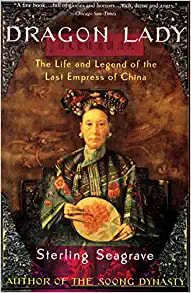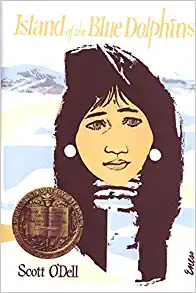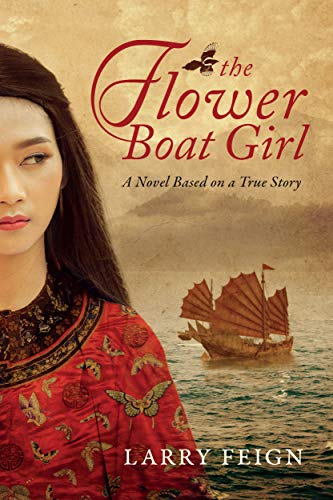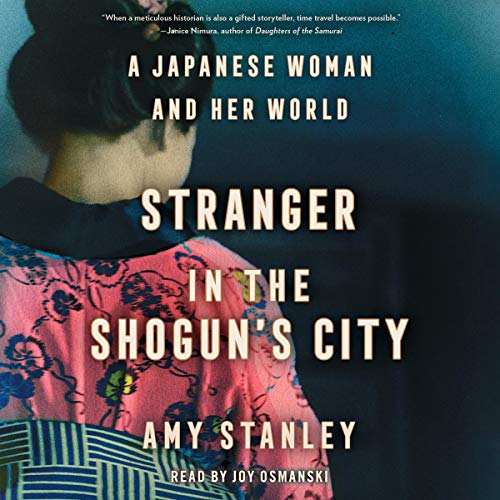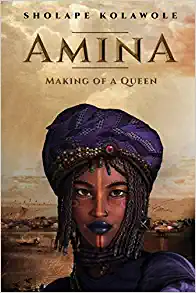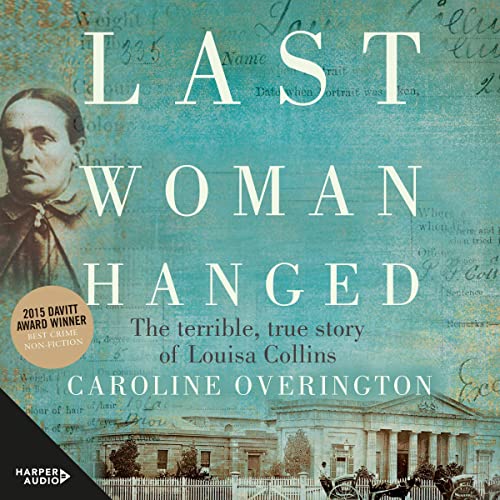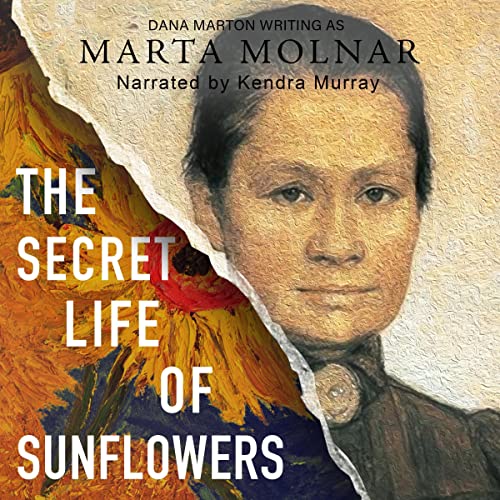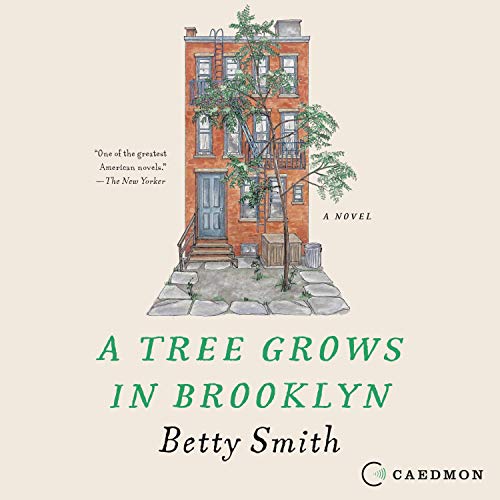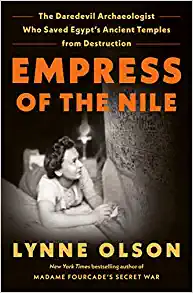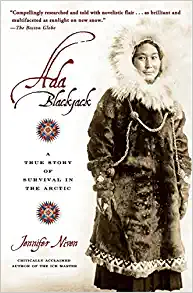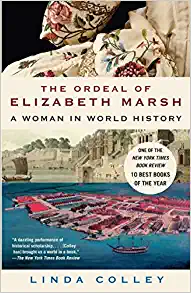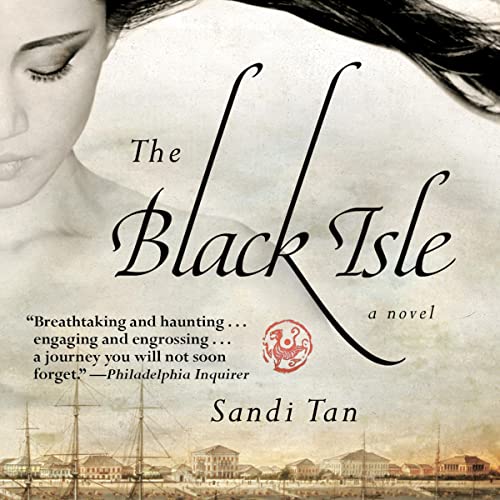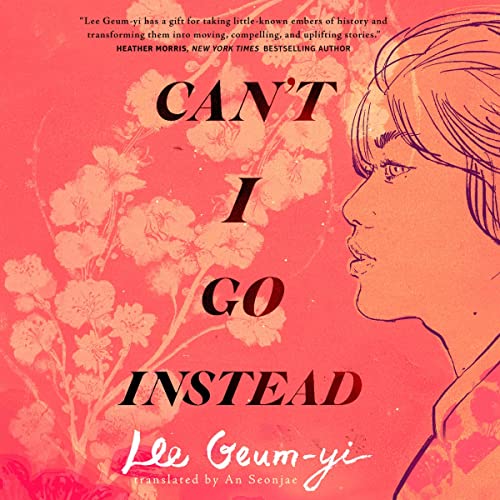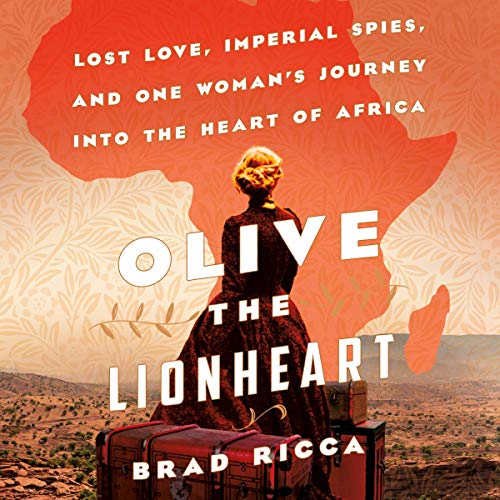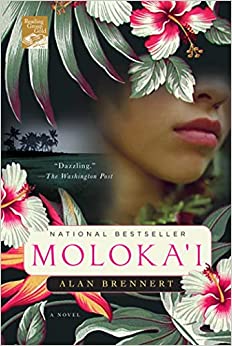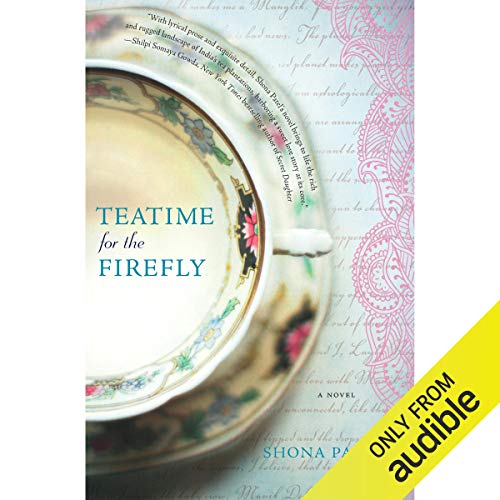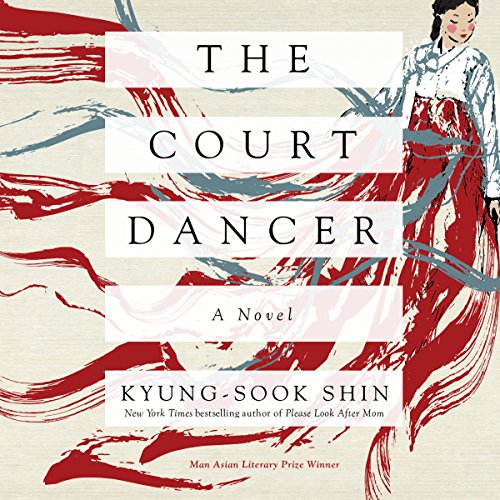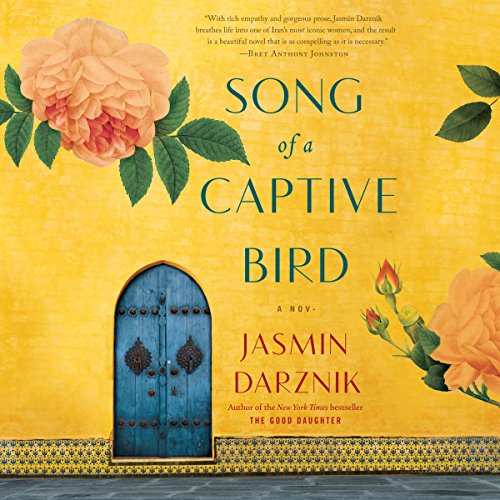25. 1850-1950 Women’s Lives Under Imperialism
|
During the imperial era, women were both active agents and survivors of colonialism. European women spread imperial ideas and participated as missionaries, but also struggled against European imperialism. Colonized women also had diverse responses to colonialism, which varied depending on location, class, and local customs.
This section has some heavy moments, so trigger warning for sexual assault. |
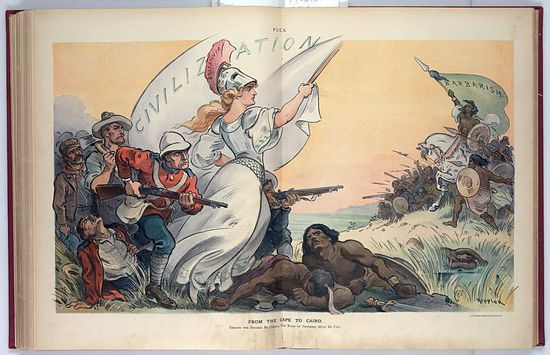 "Civilization" Propaganda, Public Domain
"Civilization" Propaganda, Public Domain
In 1899, Rudyard Kipling looked back on four centuries of British imperialism and encouraged the rising American empire to do the same. He wrote:
“Take up the White Man’s burden--
Send forth the best ye breed--
Go send your sons to exile
To serve your captives' need”
His use of masculine pronouns is misleading, as women both took part in and were affected by imperialism.
Between the 16th and 19th centuries, a few European powers came to dominate and control large swathes of the Earth, including most of Africa, South Asia, Southeast Asia, the Americas, Siberia, and more. The British empire at its height, for example, ruled one quarter of the world’s land. Such imperialism transformed forever the countries and cultures that were colonized.. While the conquering and “civilizing” of people of color was labeled by Kipling a “White Man’s Burden,” imperialism also transformed the lives of women across the world.
“Take up the White Man’s burden--
Send forth the best ye breed--
Go send your sons to exile
To serve your captives' need”
His use of masculine pronouns is misleading, as women both took part in and were affected by imperialism.
Between the 16th and 19th centuries, a few European powers came to dominate and control large swathes of the Earth, including most of Africa, South Asia, Southeast Asia, the Americas, Siberia, and more. The British empire at its height, for example, ruled one quarter of the world’s land. Such imperialism transformed forever the countries and cultures that were colonized.. While the conquering and “civilizing” of people of color was labeled by Kipling a “White Man’s Burden,” imperialism also transformed the lives of women across the world.
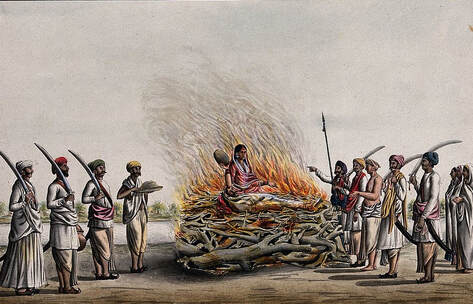 Depiction of Sati, Public Domain
Depiction of Sati, Public Domain
The British in India
The lives of women under imperialism differed across the world, and we must be wary of generalizing the experiences of both colonizer and colonized women. India became known as “the jewel in the crown” of the British Empire. India became the archetypical colonized nation, and one whose freedom had particularly harsh consequences for women. How were women affected by imperialism?
Several European nations had tried to colonize India in prior centuries, but the dominant force that came to replace the weak Mughal Empire by the mid-19th century was the East India Company, a private joint stock company chartered by Queen Elizabeth I.
One way the British justified their colonizing across the globe, but especially in India, was by propagating the idea that they were saving native women from oppression and subjugation that they suffered at the hands of native men. The British claimed that by converting native populations to Christianity, ending traditional practices and teaching them the British way of life, they would drastically improve the lives of women. While many of these laws may seem progressive, they fed into the British colonial propaganda that Indians were evil savages and that colonialism was necessary to civilize them and save their souls. Thus, British officials and missionaries purposefully exaggerated the purpose and prevalence of such traditions for their own political ends. In India, for example, the British emphasized certain practices, including child marriage and sati as examples of these barbaric patriarchal traditions. Sati refers to the act of a widow voluntarily (or not, as the British claimed) throwing herself onto her late husband’s funeral pyre, being cremated alongside him. Sati was not widely practiced across India or condoned by all Hindus, but the British exaggerated its prominence and passed laws banning the practice in an attempt to prove their defense of native women. They also passed laws against child marriage and raised the age of consent in India from 12 to 16. In South India, the British also put an end to the devadasi tradition, in which young girls were donated to a temple to serve as servants of the Goddess, although often ended up serving as prostitutes for the priests and men of their villages.
The British ignored the hypocrisy of such laws. In Victorian Britain, laws such as the Contagious Diseases Act (which was also passed in India) demonized prostitutes and blamed women for the prevalence of sexually-transmitted diseases amongst British soldiers across the globe. Working-class British girls were forced to work from the age of seven or eight, or face life in the poor house.
The lives of women under imperialism differed across the world, and we must be wary of generalizing the experiences of both colonizer and colonized women. India became known as “the jewel in the crown” of the British Empire. India became the archetypical colonized nation, and one whose freedom had particularly harsh consequences for women. How were women affected by imperialism?
Several European nations had tried to colonize India in prior centuries, but the dominant force that came to replace the weak Mughal Empire by the mid-19th century was the East India Company, a private joint stock company chartered by Queen Elizabeth I.
One way the British justified their colonizing across the globe, but especially in India, was by propagating the idea that they were saving native women from oppression and subjugation that they suffered at the hands of native men. The British claimed that by converting native populations to Christianity, ending traditional practices and teaching them the British way of life, they would drastically improve the lives of women. While many of these laws may seem progressive, they fed into the British colonial propaganda that Indians were evil savages and that colonialism was necessary to civilize them and save their souls. Thus, British officials and missionaries purposefully exaggerated the purpose and prevalence of such traditions for their own political ends. In India, for example, the British emphasized certain practices, including child marriage and sati as examples of these barbaric patriarchal traditions. Sati refers to the act of a widow voluntarily (or not, as the British claimed) throwing herself onto her late husband’s funeral pyre, being cremated alongside him. Sati was not widely practiced across India or condoned by all Hindus, but the British exaggerated its prominence and passed laws banning the practice in an attempt to prove their defense of native women. They also passed laws against child marriage and raised the age of consent in India from 12 to 16. In South India, the British also put an end to the devadasi tradition, in which young girls were donated to a temple to serve as servants of the Goddess, although often ended up serving as prostitutes for the priests and men of their villages.
The British ignored the hypocrisy of such laws. In Victorian Britain, laws such as the Contagious Diseases Act (which was also passed in India) demonized prostitutes and blamed women for the prevalence of sexually-transmitted diseases amongst British soldiers across the globe. Working-class British girls were forced to work from the age of seven or eight, or face life in the poor house.
 Queen Victoria, Wikimedia Commons
Queen Victoria, Wikimedia Commons
Upper class women were encouraged to serve only as mothers and wives and were discouraged from receiving an education beyond Bible study. While waging wars in the name of protecting Indian women, Britain attacked suffragettes and force fed them in British prisons for daring to ask for the right to vote. British women were considered property of their husbands and had limited legal rights of any kind, including custody of their children.
Even as they were attempting to ‘uplift’ and ‘liberate’ Hindu and Muslim women in India, British women felt little control or power over their own lives. This is ironic because one of the most powerful people in the world, Queen Victoria, sat on the throne of England between 1837-1901, for 63 years!
By 1877, Queen Victoria became Empress of India, sending a clear message to the world that British women had a key part to play in the expansion of the British Empire, the empire upon which the sun never set!
Even as they were attempting to ‘uplift’ and ‘liberate’ Hindu and Muslim women in India, British women felt little control or power over their own lives. This is ironic because one of the most powerful people in the world, Queen Victoria, sat on the throne of England between 1837-1901, for 63 years!
By 1877, Queen Victoria became Empress of India, sending a clear message to the world that British women had a key part to play in the expansion of the British Empire, the empire upon which the sun never set!
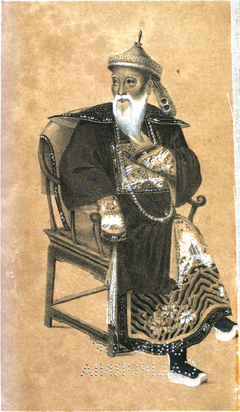 Lin Zexu, Wikimedia Commons
Lin Zexu, Wikimedia Commons
Imperialism in China
The British also had their eyes on carving up China, and they intended to use India to accomplish that goal. China remained untouched by imperialism. The Chinese had a vast market for Industrial goods and tea that the British economy desired. The Chinese were largely self-sufficient, forcing foreign nations to come to them for trade and doing little to engage beyond their borders. This balance of trade led to Britain pumping opium from India into China through the open port in Canton. The Chinese population grew increasingly addicted to opium, and Chinese authorities were frustrated with Britain for their illegal smuggling. In 1839, the emperor's son died of an opium overdose. He sent commissioner Lin Zexu’s to Canton to negotiate with the British East India trading company. He wrote a pleading letter to Queen Victoria, “By what right do they then in return use the poisonous drug to injure the Chinese people? … Let us ask, where is your conscience? I have heard that the smoking of opium is very strictly forbidden by your country; that is because the harm caused by opium is clearly understood. Since it is not permitted to do harm to your own country, then even less should you let it be passed on to the harm of other countries -- how much less to China!”
It is unclear whether Queen Victoria ever read this letter. The Chinese lost were forced to sign an unequal treaty. Britain was joined by other imperial nations and the conflict had an even more devastating impact on the Chinese.
Europeans who traveled to China were often single men who had left families behind. European women who were there were generally missionary wives coming to spread Christianity. Missionary societies set up schools for young British women to provide education to the local Chinese women. To Europeans, Confusion ideals that permeated Chinese society were oppressive.They began converting those values to Christianity in hopes of “civilizing” the Chinese. The education the British provided reinforced gender divisions and was heavily influenced by Victorian ideals back in Britain.
The British also had their eyes on carving up China, and they intended to use India to accomplish that goal. China remained untouched by imperialism. The Chinese had a vast market for Industrial goods and tea that the British economy desired. The Chinese were largely self-sufficient, forcing foreign nations to come to them for trade and doing little to engage beyond their borders. This balance of trade led to Britain pumping opium from India into China through the open port in Canton. The Chinese population grew increasingly addicted to opium, and Chinese authorities were frustrated with Britain for their illegal smuggling. In 1839, the emperor's son died of an opium overdose. He sent commissioner Lin Zexu’s to Canton to negotiate with the British East India trading company. He wrote a pleading letter to Queen Victoria, “By what right do they then in return use the poisonous drug to injure the Chinese people? … Let us ask, where is your conscience? I have heard that the smoking of opium is very strictly forbidden by your country; that is because the harm caused by opium is clearly understood. Since it is not permitted to do harm to your own country, then even less should you let it be passed on to the harm of other countries -- how much less to China!”
It is unclear whether Queen Victoria ever read this letter. The Chinese lost were forced to sign an unequal treaty. Britain was joined by other imperial nations and the conflict had an even more devastating impact on the Chinese.
Europeans who traveled to China were often single men who had left families behind. European women who were there were generally missionary wives coming to spread Christianity. Missionary societies set up schools for young British women to provide education to the local Chinese women. To Europeans, Confusion ideals that permeated Chinese society were oppressive.They began converting those values to Christianity in hopes of “civilizing” the Chinese. The education the British provided reinforced gender divisions and was heavily influenced by Victorian ideals back in Britain.
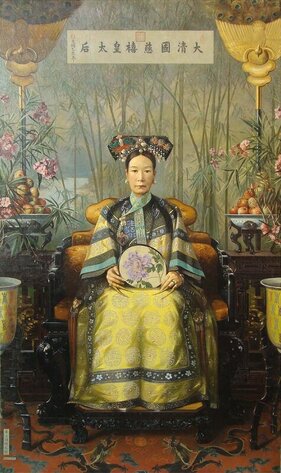 Empress Cixi, Wikimedia Commons
Empress Cixi, Wikimedia Commons
In the new British colony of Hong Kong, one of the major goals was to abolish the Mui Tsai system, which the British saw as a form of slavery that had supposedly been abolished throughout the empire. Mui tsai translates to “little sisters.” These little sisters were bondservants from poor families who were sold by their parents to richer homes where they worked their entire lives. Sometimes, they were loved like sisters, but at other times, they were taken advantage of and neglected. Sexual abuse was common. By adulthood the little sisters would sometimes be married off to poor men or sold by their new owners into prostitution.
The British had promised elites they wouldn’t interfere with traditions in Hong Kong, so authorities were reluctant to do anything about this sister tradition. The main argument in favor of this system was the well- established practice of female infanticide, or the killing of female babies. The Mui Tsai system at least ensured female babies survived to adulthood. British women and a few Chinese converts were appalled and began campaigning against the practice in the 1870s. Often, when white women try to “save” other women, they unintentionally misinterpret different cultures. There are also layers of unconscious racism and belittling present in their writings. Unfortunately, they rarely saw how poverty was a root cause of many of the issues that faced women.
Imperialism in China helped create the rise and fall of China’s second Empress, the last of the Chinese empire. Cixi came to power as the favored concubine of the emperor. When he died in 1861, Cixi's five-year-old son was his only male heir and became the emperor, making her regent as the “empress dowager.” Her son ruled independently for only two years before he died and Cixi became regent again for her three-year-old nephew.
The British had promised elites they wouldn’t interfere with traditions in Hong Kong, so authorities were reluctant to do anything about this sister tradition. The main argument in favor of this system was the well- established practice of female infanticide, or the killing of female babies. The Mui Tsai system at least ensured female babies survived to adulthood. British women and a few Chinese converts were appalled and began campaigning against the practice in the 1870s. Often, when white women try to “save” other women, they unintentionally misinterpret different cultures. There are also layers of unconscious racism and belittling present in their writings. Unfortunately, they rarely saw how poverty was a root cause of many of the issues that faced women.
Imperialism in China helped create the rise and fall of China’s second Empress, the last of the Chinese empire. Cixi came to power as the favored concubine of the emperor. When he died in 1861, Cixi's five-year-old son was his only male heir and became the emperor, making her regent as the “empress dowager.” Her son ruled independently for only two years before he died and Cixi became regent again for her three-year-old nephew.
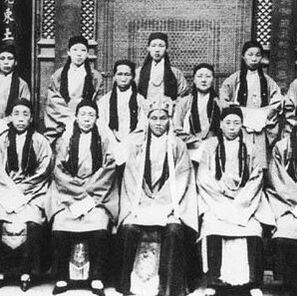 Red Lanterns, Wikimedia Commons
Red Lanterns, Wikimedia Commons
Like every other powerful female empress and regent of China, Cixi was mired in controversy. She was described by some as the wicked witch of the east, murdering and whoring to keep her power. But most modern scholars see her as a complicated woman who had to navigate the challenges of female power while the empire was being attacked by imperial nations. Missionaries in China stood out and seemed to be everywhere. Some laws and taxes didn’t apply to them, which created animosity. They preached fundamentalist Christianity to a mostly hostile Chinese population. Their own records show that after 35 years they had secured only 13,000 converts. With so much tension, when the young emperor defied Cixi to introduce some ill-advised reforms; she quickly deposed him and, with the support of elites, took power.
In 1900, rebels known as “Boxers” murdered two German priests. Queen Victoria’s son-in-law Kaiser Wilhelm II, sent German troops to China, which exacerbated the problem. Boxers began rebelling against European imperial influence in China in a widespread movement. It began in rural areas and gradually moved toward trading capitals. Girls who joined the movement were called “Shining Red Lanterns” because of the bright red outfits that they wore. They trained at night to avoid being seen and sang songs against missionary imperialism. One went, “Learn to be a Boxer, Study Red Lantern. Kill all the foreign devils and make churches burn.”
Christian families in China were murdered as the Boxers swept through the countryside. Western armies moved quickly to defend the Europeans trapped in China. At first, Cixi sent the Chinese armies to fight the Boxers. When they closed in on Westerners in Peking, she switched sides, incorporating the Boxers into the armed forces. Eight imperial nations held out against the Chinese siege for two months until eventually they were reinforced. They swept to the Capital, raping Chinese women as they went. Cixi fled the palace disguised as a peasant with bullets flying around her. She was forced to accept humiliating terms that divided China into Spheres of Influence between imperial nations. She died of a stroke in 1908, claiming at the end of her life that she had never had a day without anxiety. She ruled China for almost 50 years, a formidable woman whose skills held together a bankrupt and declining empire. With her passing, imperial China fell apart.
In 1900, rebels known as “Boxers” murdered two German priests. Queen Victoria’s son-in-law Kaiser Wilhelm II, sent German troops to China, which exacerbated the problem. Boxers began rebelling against European imperial influence in China in a widespread movement. It began in rural areas and gradually moved toward trading capitals. Girls who joined the movement were called “Shining Red Lanterns” because of the bright red outfits that they wore. They trained at night to avoid being seen and sang songs against missionary imperialism. One went, “Learn to be a Boxer, Study Red Lantern. Kill all the foreign devils and make churches burn.”
Christian families in China were murdered as the Boxers swept through the countryside. Western armies moved quickly to defend the Europeans trapped in China. At first, Cixi sent the Chinese armies to fight the Boxers. When they closed in on Westerners in Peking, she switched sides, incorporating the Boxers into the armed forces. Eight imperial nations held out against the Chinese siege for two months until eventually they were reinforced. They swept to the Capital, raping Chinese women as they went. Cixi fled the palace disguised as a peasant with bullets flying around her. She was forced to accept humiliating terms that divided China into Spheres of Influence between imperial nations. She died of a stroke in 1908, claiming at the end of her life that she had never had a day without anxiety. She ruled China for almost 50 years, a formidable woman whose skills held together a bankrupt and declining empire. With her passing, imperial China fell apart.
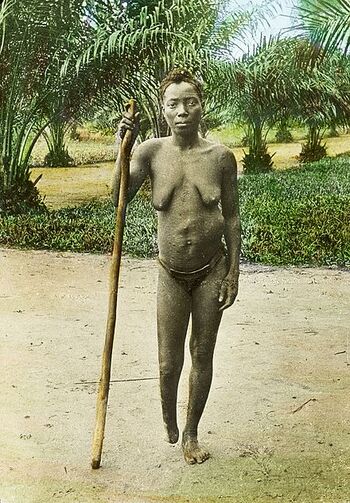 Maimed Woman in Congo, Wikimedia Commons
Maimed Woman in Congo, Wikimedia Commons
Imperialism in Africa
In 1884, not a single African leader was invited to a conference in Berlin where Europeans decided how to divide Africa between them and draw a new map of the continent. The contemporary map of Africa is still very similar to the colonial map of 1914. Only two of the delegates had even been to the continent, and none of them were women. What could possibly go wrong?
In search of raw materials which could fuel industrializing Europe, Britain and France in particular sought to control labor and land across much of Sub Saharan Africa. This had long- term environmental impacts, all the while massacring African people.
In West Africa, women farmed their own fields, participated in local trade and markets,, had economic independence, and had status as mothers and senior wives. Colonialists did not respect these gendered rights. . Under colonial rule, African men were forced into wage labor or cash-crop agriculture. Men and women began to live separate lives and develop different cultures, men working for a wage, women for sustenance. Women became heads of households.
Perhaps the most gruesome example of European treatment of African people was Queen Victoria’s cousin, King Leopold II of Belgium’s, treatment of the Congolese in the country he claimed as his personal possession: now known as the Democratic Republic of Congo. He used slave labor to extract rubber and other resources from the Congo. People who did not produce enough rubber were mutilated or killed. An estimated 10 million Congolese perished under his rule of the Congo Free State, which lasted from 1885-1908.
George Washington Williams, an African American journalist, writer, and member of the Ohio House of Assembly visited the Free State in the 1880s and also documented the abuses in an open letter to Leopold in 1890 which helped coin the term “crime against humanity.” Alice Seeley Harris, an English missionary and documentary photographer in the early 1900s took photos to document the atrocities. She sent her photos to anti-slavery publications. The political fall out resulted in Leopold relinquishing personal control over the situation.
In 1884, not a single African leader was invited to a conference in Berlin where Europeans decided how to divide Africa between them and draw a new map of the continent. The contemporary map of Africa is still very similar to the colonial map of 1914. Only two of the delegates had even been to the continent, and none of them were women. What could possibly go wrong?
In search of raw materials which could fuel industrializing Europe, Britain and France in particular sought to control labor and land across much of Sub Saharan Africa. This had long- term environmental impacts, all the while massacring African people.
In West Africa, women farmed their own fields, participated in local trade and markets,, had economic independence, and had status as mothers and senior wives. Colonialists did not respect these gendered rights. . Under colonial rule, African men were forced into wage labor or cash-crop agriculture. Men and women began to live separate lives and develop different cultures, men working for a wage, women for sustenance. Women became heads of households.
Perhaps the most gruesome example of European treatment of African people was Queen Victoria’s cousin, King Leopold II of Belgium’s, treatment of the Congolese in the country he claimed as his personal possession: now known as the Democratic Republic of Congo. He used slave labor to extract rubber and other resources from the Congo. People who did not produce enough rubber were mutilated or killed. An estimated 10 million Congolese perished under his rule of the Congo Free State, which lasted from 1885-1908.
George Washington Williams, an African American journalist, writer, and member of the Ohio House of Assembly visited the Free State in the 1880s and also documented the abuses in an open letter to Leopold in 1890 which helped coin the term “crime against humanity.” Alice Seeley Harris, an English missionary and documentary photographer in the early 1900s took photos to document the atrocities. She sent her photos to anti-slavery publications. The political fall out resulted in Leopold relinquishing personal control over the situation.
Missionaries in India
Women played a key role in the colonization in practical ways as missionaries and wives of merchants, mercenaries and civil servants. In India, in 1911, there were 1,236 European women in religious work throughout the country, compared to 1,943 men.
After the completion of the Suez Canal in 1869, an increase in Western women migrants and visitors to the subcontinent changed the nature of colonization, as more white male colonizers took fewer local indigenous women as wives and as more white women entered into the private domestic sphere as mistresses of native servants and as missionaries/teachers in the Indian spaces. This may have led to an increase in racial tension, as the boundary between colonizers and colonizers hardened. As in other colonial contexts, white imperialists’ racist fears were fueled by worries about miscegenation and the collapse of racial hierarchies in governance, commerce, and social status. White supremacists needed to maintain the false notion of racial superiority to maintain the social, political, and economic stratification that imperialism required.
British women often promoted and perpetuated imperialist propaganda that stated Indian women needed their help and liberation. Such women mobilized resources and networks to raise funds and spread literature about the benefits of expanding their empire. They also gave special lectures on the “oppressed women of India” in England to concerned subjects of the Empire.
Women played a key role in the colonization in practical ways as missionaries and wives of merchants, mercenaries and civil servants. In India, in 1911, there were 1,236 European women in religious work throughout the country, compared to 1,943 men.
After the completion of the Suez Canal in 1869, an increase in Western women migrants and visitors to the subcontinent changed the nature of colonization, as more white male colonizers took fewer local indigenous women as wives and as more white women entered into the private domestic sphere as mistresses of native servants and as missionaries/teachers in the Indian spaces. This may have led to an increase in racial tension, as the boundary between colonizers and colonizers hardened. As in other colonial contexts, white imperialists’ racist fears were fueled by worries about miscegenation and the collapse of racial hierarchies in governance, commerce, and social status. White supremacists needed to maintain the false notion of racial superiority to maintain the social, political, and economic stratification that imperialism required.
British women often promoted and perpetuated imperialist propaganda that stated Indian women needed their help and liberation. Such women mobilized resources and networks to raise funds and spread literature about the benefits of expanding their empire. They also gave special lectures on the “oppressed women of India” in England to concerned subjects of the Empire.
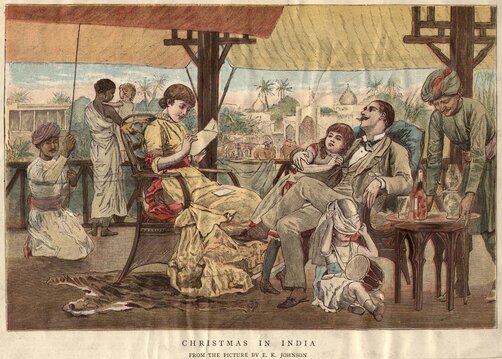 Notice Indian woman caring for the British baby in the background, New York Times
Notice Indian woman caring for the British baby in the background, New York Times
British women also traveled abroad in limited numbers to perform social work in India. Although initially, many went to India to accompany their husbands who were posted overseas, increasingly, British women went independently in the late 19th and early 20th century to work as nurses, teachers, social workers, or missionaries.
These women often held cultural and racial prejudices against the people of India and devoted themselves not only to evangelizing, converting, and civilizing native women, but also to westernizing Indian women by encouraging them to dress, speak, cook, eat, keep house, and carry themselves like ‘proper’ Victorian ladies. Some missionaries held motherhood camps so Indians could learn to bathe, feed, and diaper their babies like British mothers did.
British Women had limited access to the public sphere where men held control of commerce, governance, and formal education of native Indians. Most of their contact with native people was with servants who raised their children, cleaned their houses, and cooked their meals. Religious prejudices that deemed Islam and Hinduism as inferior faiths also caused the British to be less tolerant. They rarely learned Indian languages, went into Indian spaces such as markets, mosques, temples, weddings or festivals, or befriended native people.
Victorian women in India were held to high standards by the social rules of etiquette and the cultural norm of the day. Despite oppressive heat and humidity, British citizens were expected to dress formally and wear restricting corsets and heavy dresses that made the heat and humidity of India unbearable.
Many journals and letters from British women in this period were full of resentment and hostility towards a foreign and strange country, its people, customs, and culture. Often British women describe India as a dangerous country and its people as alien and incomprehensible.
Even women who tried their best to improve the lot of Indian women were often conservative in their approach to imperialism. For example, Josephine Butler, who worked tirelessly to repeal the Contagious Diseases Act in India and fight for women’s suffrage and education, did not join her friends in speaking out against British imperialism. She wrote that because of the work Britain had undertaken in making slavery illegal, "[w]ith all her faults, looked at from God's point of view, England is the best, and the least guilty of the nations.”
These women often held cultural and racial prejudices against the people of India and devoted themselves not only to evangelizing, converting, and civilizing native women, but also to westernizing Indian women by encouraging them to dress, speak, cook, eat, keep house, and carry themselves like ‘proper’ Victorian ladies. Some missionaries held motherhood camps so Indians could learn to bathe, feed, and diaper their babies like British mothers did.
British Women had limited access to the public sphere where men held control of commerce, governance, and formal education of native Indians. Most of their contact with native people was with servants who raised their children, cleaned their houses, and cooked their meals. Religious prejudices that deemed Islam and Hinduism as inferior faiths also caused the British to be less tolerant. They rarely learned Indian languages, went into Indian spaces such as markets, mosques, temples, weddings or festivals, or befriended native people.
Victorian women in India were held to high standards by the social rules of etiquette and the cultural norm of the day. Despite oppressive heat and humidity, British citizens were expected to dress formally and wear restricting corsets and heavy dresses that made the heat and humidity of India unbearable.
Many journals and letters from British women in this period were full of resentment and hostility towards a foreign and strange country, its people, customs, and culture. Often British women describe India as a dangerous country and its people as alien and incomprehensible.
Even women who tried their best to improve the lot of Indian women were often conservative in their approach to imperialism. For example, Josephine Butler, who worked tirelessly to repeal the Contagious Diseases Act in India and fight for women’s suffrage and education, did not join her friends in speaking out against British imperialism. She wrote that because of the work Britain had undertaken in making slavery illegal, "[w]ith all her faults, looked at from God's point of view, England is the best, and the least guilty of the nations.”
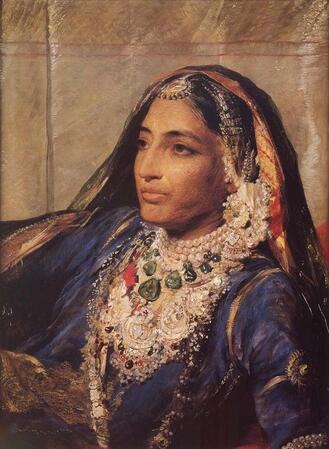 Jind Kaur, Wikimedia Commons
Jind Kaur, Wikimedia Commons
Active Participants
While colonialism subordinated all colonized women, the latter experienced colonialism in a variety of ways in part according to their class and status position. Some colonized women were active participants in imperialism as well as being subject to exploitation by colonial regimes of power. At other times, women were collaborators or beneficiaries. Some scholars have noted that elite women in colonial contexts sometimes benefitted from new educational models that promoted literacy, collectivization, and engagement with men. Women were often able to use their new skills to write petitions, create journals, publish opinions, and challenge authorities, both native and foreign. Elite colonial women sometimes took opportunities afforded to them by foreign intervention to organize political committees, social affinity groups, and/or auxiliaries of male organizations. Even though they could not vote or run for office, they could mobilize, organize, and educate one another as they sought solidarity and influence in their respective arenas. For many traditional women, the experience of having a voice in the public sphere, where male power was consolidated in commerce and formal politics, was revolutionary.
In India and Britain, women played a part in the nationalist movement and fought alongside their male counterparts for India’s freedom. From the earliest days of imperialism, Indian women such as Gulab Kaur led armies against invading forces. Jind Kaur, mother of the last Sikh emperor, became so troublesome for the British that they had her imprisoned. Her granddaughter Sophia Duleep Singh, who despite being raised in Britain at the court of Queen Victoria, spent her life fighting for Indian independence and the rights of women both in Britain and in India. In India, women such as Sarojini Naidu and Ismat Chughtai wrote pamphlets and poems advocating for an end to British rule. Others, such as Ruttie Jinnah and Kasturba Gandhi took to the political sphere to influence the eventual freedom that their husbands would get all the credit for.
Lakshmibai, the Rani of Jhansi, was a leader in the Indian Rebellion of 1857. In just her twenties, she was a widow to the late ruler and used her position to support the rebellion. The British overlords decided to annex her state and attempted to bribe her to leave with a chest of money. She joined and then led the Indian rebels. Lakshmibai's troops massacred a garrison of British soldiers, their wives, and children.
She fought for two years dressed as a man and wielding a saber, but her rebellion was defeated in 1858. She died in battle. After her death, her body was burned in a huge ceremony, and she is remembered as a hero of India.
While colonialism subordinated all colonized women, the latter experienced colonialism in a variety of ways in part according to their class and status position. Some colonized women were active participants in imperialism as well as being subject to exploitation by colonial regimes of power. At other times, women were collaborators or beneficiaries. Some scholars have noted that elite women in colonial contexts sometimes benefitted from new educational models that promoted literacy, collectivization, and engagement with men. Women were often able to use their new skills to write petitions, create journals, publish opinions, and challenge authorities, both native and foreign. Elite colonial women sometimes took opportunities afforded to them by foreign intervention to organize political committees, social affinity groups, and/or auxiliaries of male organizations. Even though they could not vote or run for office, they could mobilize, organize, and educate one another as they sought solidarity and influence in their respective arenas. For many traditional women, the experience of having a voice in the public sphere, where male power was consolidated in commerce and formal politics, was revolutionary.
In India and Britain, women played a part in the nationalist movement and fought alongside their male counterparts for India’s freedom. From the earliest days of imperialism, Indian women such as Gulab Kaur led armies against invading forces. Jind Kaur, mother of the last Sikh emperor, became so troublesome for the British that they had her imprisoned. Her granddaughter Sophia Duleep Singh, who despite being raised in Britain at the court of Queen Victoria, spent her life fighting for Indian independence and the rights of women both in Britain and in India. In India, women such as Sarojini Naidu and Ismat Chughtai wrote pamphlets and poems advocating for an end to British rule. Others, such as Ruttie Jinnah and Kasturba Gandhi took to the political sphere to influence the eventual freedom that their husbands would get all the credit for.
Lakshmibai, the Rani of Jhansi, was a leader in the Indian Rebellion of 1857. In just her twenties, she was a widow to the late ruler and used her position to support the rebellion. The British overlords decided to annex her state and attempted to bribe her to leave with a chest of money. She joined and then led the Indian rebels. Lakshmibai's troops massacred a garrison of British soldiers, their wives, and children.
She fought for two years dressed as a man and wielding a saber, but her rebellion was defeated in 1858. She died in battle. After her death, her body was burned in a huge ceremony, and she is remembered as a hero of India.
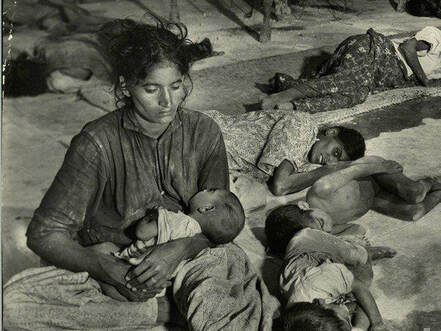
Some white British women traveled to India to provide support and solidarity to those fighting for independence. Perhaps the most well known of these was Annie Besant, who helped launch the Home Rule League to campaign for democracy in India and dominion status within the British Empire. This led to her election as president of the Indian National Congress in late 1917. She was not the only British woman to side with India against the Empire. Freida Bedi moved to India with her Indian husband and dedicated her life to writing and protesting against British rule, even being arrested several times for anti-English agitation. Madeline Slade, who became known as Merabehn, left her home in England to live and work alongside Mahatma Gandhi and has since been lost in his shadow along with myriad other female freedom fighters.
Independence
Despite the best efforts of those fighting for Home Rule, India did not gain its independence until 1947. The Partition of India and creation of Pakistan in that year resulted in the colony being divided and the population of India split into two countries, organized broadly into Hindu and Muslim groups.
This resulted in one of the biggest forced migrations in human history, with more than 10 million people moving between India and Pakistan. In this process, 1.5 million people died from inter-religious violence, disease, starvation, and exhaustion. Women bore the brunt of partition. Tens of thousands of women from all religious communities were kidnapped, murdered, mutilated, and raped by “enemy” communities. Many, including children, were forced into marriages and many committed suicide rather than face the prospect of rape or mutilation at the hands of men. The British launched a campaign to “recover” these stolen women, but many did not wish to return to communities that were likely to reject them if their honor had been compromised or if they had made a new home in their new country. Today, the plight of South Asian women during Partition remains virtually unknown beyond the Indian subcontinent, despite being one of the darkest examples of women’s lives under imperialism.
By the end of this era, so much remained in question. How would women in these colonial societies respond? And what role would they play in colonial resistance?
Independence
Despite the best efforts of those fighting for Home Rule, India did not gain its independence until 1947. The Partition of India and creation of Pakistan in that year resulted in the colony being divided and the population of India split into two countries, organized broadly into Hindu and Muslim groups.
This resulted in one of the biggest forced migrations in human history, with more than 10 million people moving between India and Pakistan. In this process, 1.5 million people died from inter-religious violence, disease, starvation, and exhaustion. Women bore the brunt of partition. Tens of thousands of women from all religious communities were kidnapped, murdered, mutilated, and raped by “enemy” communities. Many, including children, were forced into marriages and many committed suicide rather than face the prospect of rape or mutilation at the hands of men. The British launched a campaign to “recover” these stolen women, but many did not wish to return to communities that were likely to reject them if their honor had been compromised or if they had made a new home in their new country. Today, the plight of South Asian women during Partition remains virtually unknown beyond the Indian subcontinent, despite being one of the darkest examples of women’s lives under imperialism.
By the end of this era, so much remained in question. How would women in these colonial societies respond? And what role would they play in colonial resistance?
Draw your own conclusions
Lesson Plans from Other Organizations
- This website, Women in World History has primary source based lesson plans on women's history in a whole range of topics. Some are free while others have a cost.
- The Roy Rosenzweig Center for History and New Media has produced recommendations for teaching women's history with primary sources and provided a collection of sources for world history. Check them out!
- The Stanford History Education Group has a number of lesson plans about women in World History.
Fredercick Forbes: Description Of Amazon People
Frederick Forbes traveled to West Africa as an officer for the British Royal Navy and published his journal in 1851. He was sent to the kingdom to convince the King to suppress Dahomey's involvement with the slave trade. As Britain had banned the slave trade, Forbes worked to bring to the public's attention the slave hunts practiced by the Dahomey. This is one of his sketches of a Mino or Amazon warrior next to his description of the Amazons.
The amazons are not supposed to marry, and, by their own statement, they have changed their sex. "We are men," say they, " not women." All dress alike, diet alike, and male and female emulate each other: what the males do, the amazons will endeavour to surpass. They all take great care of their arms, polish the bar- rels, and, except when on duty, keep them in covers. There is no duty at the palace, except when the king is in public, and then a guard of amazons protect the royal person, and, on review, he is guarded by the males ; but outside the palace is always a strong detachment of males ready for service. The amazons are in barracks within the palace enclosure, and under the care of the eunuchs and the camboodee or treasurer. In every action (with males and females), there is some reference to cutting off heads.
[T]he palace, or the grand Fetish houses…The royal wives and their slaves, I presume from the jealousy of their despotic lord, are considered too sacred for man to gaze upon ; and on meeting any of these sable beauties on the road, a bell warns the wayfarer to turn off, or stand against a wall while they pass. The king has thousands of wives… If one of the wives of the king, or a high officer's, commits adultery, the culprits are summarily beheaded ; and the skull of one of the Agaou's wives is at present exposed in the square of the palace of Agrimgomeh, in Abomey. But if adultery be committed by parties of lower rank, they are sold Marriages. If a uiau scduccs a girl, the law obliges marriage, and the payment of eighty heads of cowries to the parent or master, on pain of becoming himself a slave. In marriage there is no ceremony, except where the king confers the wife, in which instance the maiden presents her future lord with a glass of rum.
Forbes, Frederick. “Seh-Dong-Hong-Beh, leader of the en:Dahomey Amazons.” Dahomey of the Dahomans. 1851. (being the journals of two missions to the king of Dahomey, and residence at his capital), 23-24. Retrieved from https://archive.org/details/dahomeydahomansb00forb/page/n41/mode/2up.
Questions:
The amazons are not supposed to marry, and, by their own statement, they have changed their sex. "We are men," say they, " not women." All dress alike, diet alike, and male and female emulate each other: what the males do, the amazons will endeavour to surpass. They all take great care of their arms, polish the bar- rels, and, except when on duty, keep them in covers. There is no duty at the palace, except when the king is in public, and then a guard of amazons protect the royal person, and, on review, he is guarded by the males ; but outside the palace is always a strong detachment of males ready for service. The amazons are in barracks within the palace enclosure, and under the care of the eunuchs and the camboodee or treasurer. In every action (with males and females), there is some reference to cutting off heads.
[T]he palace, or the grand Fetish houses…The royal wives and their slaves, I presume from the jealousy of their despotic lord, are considered too sacred for man to gaze upon ; and on meeting any of these sable beauties on the road, a bell warns the wayfarer to turn off, or stand against a wall while they pass. The king has thousands of wives… If one of the wives of the king, or a high officer's, commits adultery, the culprits are summarily beheaded ; and the skull of one of the Agaou's wives is at present exposed in the square of the palace of Agrimgomeh, in Abomey. But if adultery be committed by parties of lower rank, they are sold Marriages. If a uiau scduccs a girl, the law obliges marriage, and the payment of eighty heads of cowries to the parent or master, on pain of becoming himself a slave. In marriage there is no ceremony, except where the king confers the wife, in which instance the maiden presents her future lord with a glass of rum.
Forbes, Frederick. “Seh-Dong-Hong-Beh, leader of the en:Dahomey Amazons.” Dahomey of the Dahomans. 1851. (being the journals of two missions to the king of Dahomey, and residence at his capital), 23-24. Retrieved from https://archive.org/details/dahomeydahomansb00forb/page/n41/mode/2up.
Questions:
- How does he describe the Amazon warrior women?
- Why might this British officer have a different perspective on the Amazons than the Dahomey themselves? How might that impact this account?
Alfred Skertchly: Dahomey As It Is
Alfred Skertchly left England in 1871 to collect zoological specimens West Coast of Africa. He traveled to Abomey, the capital of Dahomey, to train the King on the use of new weapons. He expected to stay for eight days but was held as an unwilling, yet well treated guest. This is his account of the Amazons.
One of the most singular institutions of Dahomey is the female army, or Amazons, as they have been called. When these soldieresses were first introduced into the country is unknown…
Who has not heard of the ferocious actions of a drunken woman; and do not the daily papers bear witness to the fact that, once roused, a woman will perpetrate far greater cruelty than a man? Did not the petroleuses of Paris wander about like she-demons of the nether world? What spectacle is more calculated to inspire horror than a savage and brutal woman in a passion? and when we imagine such to be besprinkled with the blood of the slain, and perhaps carrying the gory head of some decapitated victim, one may cease to wonder at the dread with which these female warriors were, and still are, looked upon by the surrounding nations…
[I]t would… be a happy release from their relatives if all the old maids could be enlisted, and trained to vent their feline spite and mischief-making propensities on the enemies of the country, instead of their neighbours. At any rate, they would be removed out of the way of the sycophantic parasites, who invariably hover round them, should they be possessed of any property, in the hope of cajoling them out of it. Instances are not by any means rare, of females who have donned the soldier's uniform, and fought bravely side by side, not taking into consideration such heroines as Joan of Arc, Margaret of Anjou, Boadicea, and a host of others… As for physical endurance, do not scores of charwomen and laundresses drag out a life of literal slavery…
Nevertheless, there can be no doubt that the Amazonian army of Dahomey is one of the causes of its slow decadence… Dahomey will have to be classed among the nations that have been.
Skertchly, J. Alfred. “Dahomey as it Is.” London: Legare Street Press, 2021. First published in 1884 by Chapman and Hall, 454-459.
Questions:
One of the most singular institutions of Dahomey is the female army, or Amazons, as they have been called. When these soldieresses were first introduced into the country is unknown…
Who has not heard of the ferocious actions of a drunken woman; and do not the daily papers bear witness to the fact that, once roused, a woman will perpetrate far greater cruelty than a man? Did not the petroleuses of Paris wander about like she-demons of the nether world? What spectacle is more calculated to inspire horror than a savage and brutal woman in a passion? and when we imagine such to be besprinkled with the blood of the slain, and perhaps carrying the gory head of some decapitated victim, one may cease to wonder at the dread with which these female warriors were, and still are, looked upon by the surrounding nations…
[I]t would… be a happy release from their relatives if all the old maids could be enlisted, and trained to vent their feline spite and mischief-making propensities on the enemies of the country, instead of their neighbours. At any rate, they would be removed out of the way of the sycophantic parasites, who invariably hover round them, should they be possessed of any property, in the hope of cajoling them out of it. Instances are not by any means rare, of females who have donned the soldier's uniform, and fought bravely side by side, not taking into consideration such heroines as Joan of Arc, Margaret of Anjou, Boadicea, and a host of others… As for physical endurance, do not scores of charwomen and laundresses drag out a life of literal slavery…
Nevertheless, there can be no doubt that the Amazonian army of Dahomey is one of the causes of its slow decadence… Dahomey will have to be classed among the nations that have been.
Skertchly, J. Alfred. “Dahomey as it Is.” London: Legare Street Press, 2021. First published in 1884 by Chapman and Hall, 454-459.
Questions:
- Underline words used to describe the Amazon warriors. Overall, how would you say they are viewed?
- How might differences in culture impact his account?
- Were the Dahomey women powerful?
Mrs. Crane: Letter About The Empress
Imperial rulers of China lived inside the Forbidden City, a palace city used by the Emperors of China. The city was “forbidden” to almost all subjects. Beginning during the Ming dynasty, the Forbidden City became the location of the imperial court. The city created a literal wall between the rulers and the lay people, clouding them in mystery and misunderstanding. Nothing in the historical record tells us more about Mrs. Crane, the author of this document, but her position on the empress is clear.
The sense of justice shown by England in her protest against the murderous cruelty of that human vampire, the Dowager of China, should be followed by all civilized and Christian folk [e]ndorsing these lines: ‘Rebellion to tyrants, obedience to God.” The tree of liberty only grows when watered by the blood of tyrants, and who more worthy of death than she who has connived at and urged on the murdering of our dear missionaries?
Mrs. William Halsted Crane, “Career of Chinese Dowager Empress,” New York Times, Aug. 8, 1903, 6.
Questions:
The sense of justice shown by England in her protest against the murderous cruelty of that human vampire, the Dowager of China, should be followed by all civilized and Christian folk [e]ndorsing these lines: ‘Rebellion to tyrants, obedience to God.” The tree of liberty only grows when watered by the blood of tyrants, and who more worthy of death than she who has connived at and urged on the murdering of our dear missionaries?
Mrs. William Halsted Crane, “Career of Chinese Dowager Empress,” New York Times, Aug. 8, 1903, 6.
Questions:
- Who is the source of this document? Is she Chinese? How well is she likely to know the Empress?
- What does the tone of this excerpt say about how Empress Cixi was viewed by some foreign sources?
- Empress Cixi is often described as power hungry and manipulative. Looking further than just her description, how might these descriptives affect her legacy, as well as the perceptions of women in power?
Empress Cixi: Reform Edict Of The Qing Imperial Government Issued
In the wake of the Boxer Uprising (1899-1901) and the catastrophic foreign intervention that that movement precipitated, the imperial government reconsidered the need for fundamental reforms. Government reform had already been attempted, and rejected, in 1898 when Kang Youwei (1858-1927) and his colleagues temporarily ran the imperial government, with the support of the Guangxu Emperor (1871-1908, r. 1875-1908), until the Empress Dowager Cixi (1835-1908) ousted them.
Certain principles of morality (changqing) are immutable, whereas methods of governance (zhifa) have always been mutable. The Classic of Changes states that “when a measure has lost effective force, the time has come to change it.” And the Analects states that “the Shang and Zhou dynasties took away and added to the regulations of their predecessors, as can readily be known.”
… We have now received Her Majesty’s decree to devote ourselves fully to China’s revitalization, to suppress vigorously the use of the terms new and old, and to blend together the best of what is Chinese and what is foreign. The root of China’s weakness lies in harmful habits too firmly entrenched, in rules and regulations too minutely drawn, in the overabundance of inept and mediorìcre officials and in the paucity of truly outstanding ones, in petty bureaus who hide behind the written word and in clerks and yamen runners who use the written word as talismans to acquire personal fortunes, in the mountains of correspondence between government offices that have no relationship to reality, and in the seniority system and associated practices that block the way of men of real talent…
The first essential, even more important than devising new systems of governance (zhifa) is to secure men who govern well (zhi ren). Without new systems, the corrupted old system cannot be salvaged; without men of ability, even good systems cannot be made to succeed.
‘Reform Edict of the Qing Imperial Government’. Columbia University Press, 29 January 1901. http://afe.easia.columbia.edu/ps/cup/qing_reform_edict_1901.pdf.
Questions:
Certain principles of morality (changqing) are immutable, whereas methods of governance (zhifa) have always been mutable. The Classic of Changes states that “when a measure has lost effective force, the time has come to change it.” And the Analects states that “the Shang and Zhou dynasties took away and added to the regulations of their predecessors, as can readily be known.”
… We have now received Her Majesty’s decree to devote ourselves fully to China’s revitalization, to suppress vigorously the use of the terms new and old, and to blend together the best of what is Chinese and what is foreign. The root of China’s weakness lies in harmful habits too firmly entrenched, in rules and regulations too minutely drawn, in the overabundance of inept and mediorìcre officials and in the paucity of truly outstanding ones, in petty bureaus who hide behind the written word and in clerks and yamen runners who use the written word as talismans to acquire personal fortunes, in the mountains of correspondence between government offices that have no relationship to reality, and in the seniority system and associated practices that block the way of men of real talent…
The first essential, even more important than devising new systems of governance (zhifa) is to secure men who govern well (zhi ren). Without new systems, the corrupted old system cannot be salvaged; without men of ability, even good systems cannot be made to succeed.
‘Reform Edict of the Qing Imperial Government’. Columbia University Press, 29 January 1901. http://afe.easia.columbia.edu/ps/cup/qing_reform_edict_1901.pdf.
Questions:
- Who is the author of this document?
- What are the problems outlined in the royal edict?
- In the final paragraph, why do they need to “secure men who govern well”? What does this imply about the real power Cixi has?
- Based on this edict, what kind of ruler was Empress Cixi?
Princess Der Ling: Two Years In The Forbidden City
For two years, Princess Der Ling was the favorite lady-in-waiting to the Empress Dowager Cixi in the imperial palace in Beijing. This book provides a unique and surprisingly intimate portrait of the Dragon Lady, who ruled China for 47 years, and brought the country to the brink of destruction. Der Ling refers to the larger political context on many occasions. But the best parts of the book are the small details. What emerges is an intimate portrait of the life and personality of the Empress Dowager, and a sense of the inner workings of the highly secretive world of the imperial palace.
[A]ccording to the Manchu custom, the daughters of all Manchu officials of the second rank and above, after reaching the age of fourteen years, should go to the Palace, in order that the Emperor may select them for secondary wives if he so desires, and my father had other plans and ambitions for us. It was in this way that the late Empress Dowager was selected by the Emperor Hsien Feng…
"Her Majesty has sent me to meet you," and was very sweet and polite, and had beautiful manners; but was not very pretty. Then we heard a loud voice from the hall saying, "Tell them to come in at once”... Her Majesty stood up when she saw us and shook hands with us. She had a most fascinating smile and was very much surprised that we knew the Court etiquette so well. After she had greeted us, she said to my mother: "Yu tai tai (Lady Yu), you are a wonder the wayyou have brought your daughters up. They speak Chinese just as well as I do, although I know they have been abroad for so many years, and how is it that they have such beautiful manners?" "Their father was always very strict with them," my mother replied… Her Majesty asked all sorts of questions about our Paris gowns and said we must wear them all the time, as she had very little chance to see them at the Court…
When we commenced to eat, Her Majesty ordered the eunuchs to place plates for us and give us silver chopsticks, spoons, etc., and said: "I am sorry you have to eat standing, but I cannot break the law of our great ancestors. Even the Young Empress cannot sit in my presence. I am sure the foreigners must think we are barbarians to treat our Court ladies in this way and I don't wish them to know anything about our customs. You will see how differently I act in their presence, so that they cannot see my true self.”
…”Do you think they, the foreigners, really like me? I don't think so; on the contrary I know they haven't forgotten the Boxer Rising in Kwang Hsu's 26th year. I don't mind owning up that I like our old ways the best, and I don't see any reason why we should adopt the foreign style. Did any of the foreign ladies ever tell you that I am a fierce-looking old woman?" I was very much surprised that she should… ask me such questions during her meal. She looked quite serious and it seemed to me she was quite annoyed. I assured her that no one ever said anything about Her Majesty but nice things. The foreigners told me how nice she was, and how graceful, etc. This seemed to please her, and she smiled and said: "Of course they have to tell you that, just to make you feel happy by saying that your sovereign is perfect, but I know better. I can't worry too much, but I hate to see China in such a poor condition… While she was saying this I noticed her worried expression. I did not know what to say, but tried to comfort her by saying that that time will come, and we are all looking forward to it.
Der Ling. Two Years in the Forbidden City. Project Gutenberg. 1911
Questions:
[A]ccording to the Manchu custom, the daughters of all Manchu officials of the second rank and above, after reaching the age of fourteen years, should go to the Palace, in order that the Emperor may select them for secondary wives if he so desires, and my father had other plans and ambitions for us. It was in this way that the late Empress Dowager was selected by the Emperor Hsien Feng…
"Her Majesty has sent me to meet you," and was very sweet and polite, and had beautiful manners; but was not very pretty. Then we heard a loud voice from the hall saying, "Tell them to come in at once”... Her Majesty stood up when she saw us and shook hands with us. She had a most fascinating smile and was very much surprised that we knew the Court etiquette so well. After she had greeted us, she said to my mother: "Yu tai tai (Lady Yu), you are a wonder the wayyou have brought your daughters up. They speak Chinese just as well as I do, although I know they have been abroad for so many years, and how is it that they have such beautiful manners?" "Their father was always very strict with them," my mother replied… Her Majesty asked all sorts of questions about our Paris gowns and said we must wear them all the time, as she had very little chance to see them at the Court…
When we commenced to eat, Her Majesty ordered the eunuchs to place plates for us and give us silver chopsticks, spoons, etc., and said: "I am sorry you have to eat standing, but I cannot break the law of our great ancestors. Even the Young Empress cannot sit in my presence. I am sure the foreigners must think we are barbarians to treat our Court ladies in this way and I don't wish them to know anything about our customs. You will see how differently I act in their presence, so that they cannot see my true self.”
…”Do you think they, the foreigners, really like me? I don't think so; on the contrary I know they haven't forgotten the Boxer Rising in Kwang Hsu's 26th year. I don't mind owning up that I like our old ways the best, and I don't see any reason why we should adopt the foreign style. Did any of the foreign ladies ever tell you that I am a fierce-looking old woman?" I was very much surprised that she should… ask me such questions during her meal. She looked quite serious and it seemed to me she was quite annoyed. I assured her that no one ever said anything about Her Majesty but nice things. The foreigners told me how nice she was, and how graceful, etc. This seemed to please her, and she smiled and said: "Of course they have to tell you that, just to make you feel happy by saying that your sovereign is perfect, but I know better. I can't worry too much, but I hate to see China in such a poor condition… While she was saying this I noticed her worried expression. I did not know what to say, but tried to comfort her by saying that that time will come, and we are all looking forward to it.
Der Ling. Two Years in the Forbidden City. Project Gutenberg. 1911
Questions:
- Who is the source of this document? Is she Chinese? How well is she likely to know the Empress?
- What does the tone of this excerpt say about how Empress Cixi was viewed by some foreign sources?
- Based on this book, what kind of ruler was Empress Cixi?
oRal Histories: The Red Lanterns
The following are excerpts from oral histories gathered through Shandong University in Jinan, China. The oral histories were recorded beginning in the 1960s.
Girls who joined the Boxers were called ‘Shining Red Lanterns.’ They dressed all in red. In one hand they had a little red lantern and in the other a little red fan. They carried a basket in the crook of their arm. When bullets were shot at them they waved their fans and the bullets were caught in the basket. You couldn’t hit them!... In every village there were girls who studied the Shining Red Lantern. In my village there were eight or ten of them…There was a song then that went:
‘Learn to be a Boxer, study the Red Lantern, Kill all the foreign devils and make the churches burn.’ Miss Han [Han Guniang] was from Long’gu in Zhili [Hebei]...[she] came to Long[gu on the big hemp marketing day…in 1900. She was riding a big horse and a dozen or so followers came with her. They entered Long’gu blowing bugles and many people ran to watch her. Her followers came from all over Long’gu; there were several thousand of them…It was said she was a Shining Red Lantern. She was very skillful; she could fight with spears or a sword. When she rode on a bench, it would turn into a horse; if she rode a rope, it would change into a dragon; if she sat on a mat it would become a cloud and she could ride the cloud and fly away.
Chen, Janet Y, Pei-kai Cheng, Michael Elliot Lestz, and Jonathan D Spence. The Search for Modern China: A Documentary Collection. Third ed. New York: W.W. Norton & Company, 2014 (184-185).
Questions:
Girls who joined the Boxers were called ‘Shining Red Lanterns.’ They dressed all in red. In one hand they had a little red lantern and in the other a little red fan. They carried a basket in the crook of their arm. When bullets were shot at them they waved their fans and the bullets were caught in the basket. You couldn’t hit them!... In every village there were girls who studied the Shining Red Lantern. In my village there were eight or ten of them…There was a song then that went:
‘Learn to be a Boxer, study the Red Lantern, Kill all the foreign devils and make the churches burn.’ Miss Han [Han Guniang] was from Long’gu in Zhili [Hebei]...[she] came to Long[gu on the big hemp marketing day…in 1900. She was riding a big horse and a dozen or so followers came with her. They entered Long’gu blowing bugles and many people ran to watch her. Her followers came from all over Long’gu; there were several thousand of them…It was said she was a Shining Red Lantern. She was very skillful; she could fight with spears or a sword. When she rode on a bench, it would turn into a horse; if she rode a rope, it would change into a dragon; if she sat on a mat it would become a cloud and she could ride the cloud and fly away.
Chen, Janet Y, Pei-kai Cheng, Michael Elliot Lestz, and Jonathan D Spence. The Search for Modern China: A Documentary Collection. Third ed. New York: W.W. Norton & Company, 2014 (184-185).
Questions:
- According to these interviews, how did women support and lead in the Boxer Rebellion?
- Descriptions of the Red Lanterns sometimes describe them as having magical powers. Whether they really had these powers or not, what might the idea of these powers tell us about how people viewed the Red Lanterns?
Unknown: A Symbol Of Chinese Women
The red lantern of the Red Lanterns is a symbol of the militancy of Chinese women; the daughters of the Red Lantern are the vanguard of the opposition of Chinese women to imperialism! Mountains may be leveled and the seas may be emptied, but the red lantern of revolution will never be extinguished!
Quoted in Liu Rong and Xu Fen. 1975. “Hongdeng nu’er song” [In praise of the daughters of the Red Lantern]. Tianjin shiyuan xuebao [Tianjin Teachers College journal] No. 2:78-82, 77.
Questions:
Quoted in Liu Rong and Xu Fen. 1975. “Hongdeng nu’er song” [In praise of the daughters of the Red Lantern]. Tianjin shiyuan xuebao [Tianjin Teachers College journal] No. 2:78-82, 77.
Questions:
- How does this document portray the Red Lanterns?
- According to this document, how were women important to the Boxer Rebellion?
Empress Cixi: The Empress Dowager Calls For Reform
The Empress Dowager Cixi was officially the regent, or the person ruling on behalf of the Guangxu Emperor. In 1898, the young emperor was removed from power and Cixi was effectively the ruler of China for another decade. During the Boxer Rebellion, she supported the Boxers and saw their efforts as a way to remove foreigners from China. In January 1901, she issued an edict that called for government reform in the aftermath of the Boxer Rebellion.
It was only by an appeal to the Empress Dowager to resume the reins of power that the court was saved from immediate peril and the evil rooted out in a single day… We have now received Her Majesty’s decree to devote ourselves fully to China’s revitalization, to suppress vigorously the use of the terms new and old, and to blend together the best of what is Chinese and what is foreign. The root of China’s weakness lies in harmful habits too firmly entrenched, in rules and regulations too minutely drawn…To sum up, administrative methods and regulations must be revised and abuses eradicated. If regeneration is truly desired, there must be quiet and reasoned deliberation…
We therefore call upon the members of the Grand Council, the Grand Secretaries, the Six Boards and Nine ministries, our ministers abroad, and the governors-general and governors of the provinces to reflect carefully on our present sad state of affairs and to scrutinize Chinese and Western governmental systems…Duly weigh what should be kept and what abolished, what new methods should be adopted and what old ones retained. By every available means of knowledge and observation, seek out how to renew our national strength, how to produce men of real talent, how to expand state revenues and how to revitalize the military…Without new systems, the corrupted old system cannot be salvaged…
The Empress Dowager and we have long pondered these matters. Now things are at a crisis point where change must occur, to transform weakness into strength. Everything depends upon how the change is effected.
Reform Edict of the Qing Imperial Government, January 29, 1901. Selections from Asia for Educators, Columbia University, http://afe.easia.columbia.edu/ps/cup/qing_reform_edict_1901.pdf.
Questions:
It was only by an appeal to the Empress Dowager to resume the reins of power that the court was saved from immediate peril and the evil rooted out in a single day… We have now received Her Majesty’s decree to devote ourselves fully to China’s revitalization, to suppress vigorously the use of the terms new and old, and to blend together the best of what is Chinese and what is foreign. The root of China’s weakness lies in harmful habits too firmly entrenched, in rules and regulations too minutely drawn…To sum up, administrative methods and regulations must be revised and abuses eradicated. If regeneration is truly desired, there must be quiet and reasoned deliberation…
We therefore call upon the members of the Grand Council, the Grand Secretaries, the Six Boards and Nine ministries, our ministers abroad, and the governors-general and governors of the provinces to reflect carefully on our present sad state of affairs and to scrutinize Chinese and Western governmental systems…Duly weigh what should be kept and what abolished, what new methods should be adopted and what old ones retained. By every available means of knowledge and observation, seek out how to renew our national strength, how to produce men of real talent, how to expand state revenues and how to revitalize the military…Without new systems, the corrupted old system cannot be salvaged…
The Empress Dowager and we have long pondered these matters. Now things are at a crisis point where change must occur, to transform weakness into strength. Everything depends upon how the change is effected.
Reform Edict of the Qing Imperial Government, January 29, 1901. Selections from Asia for Educators, Columbia University, http://afe.easia.columbia.edu/ps/cup/qing_reform_edict_1901.pdf.
Questions:
- What role did the Empress Dowager Cixi play in the Boxer Rebellion?
- What methods did Empress Dowager Cixi use to address the Boxer Rebellion, according to this document?
Princess Der Ling: Two Years In The Forbidden City, Excerpt
For two years, Princess Der Ling was the favorite lady-in-waiting to the Empress Dowager Cixi in the imperial palace in Beijing. This book provides a unique and surprisingly intimate portrait of the Dragon Lady, who ruled China for 47 years, and brought the country to the brink of destruction. Der Ling refers to the larger political context on many occasions. But the best parts of the book are the small details. What emerges is an intimate portrait of the life and personality of the Empress Dowager, and a sense of the inner workings of the highly secretive world of the imperial palace.
When I informed Her Majesty of the arrival of the portrait she ordered that it should be brought into her bedroom immediately. She scrutinized it very carefully for a while, even touching the painting in her curiosity. Finally she burst out laughing and said: "What a funny painting this is, it looks as though it had been painted with oil." (Of course it was an oil painting.) "Such rough work I never saw in all my life. The picture itself is marvellously like you, and I do not hesitate to say that none of our Chinese painters could get the expression which appears on this picture. What a funny dress you are wearing in this picture. Why are your arms and neck all bare? I have heard that foreign ladies wear their dresses without sleeves and without collars, but I had no idea that it was so bad and ugly as the dress you are wearing here. I cannot imagine how you could do it. I should have thought you would have been ashamed to expose yourself in that manner. Don't wear any more such dresses, please. It has quite shocked me. What a funny kind of civilization this is to be sure. Is this dress only worn on certain occasions, or is it worn any time, even when gentlemen are present?" I explained to her that it was the usual evening dress for ladies and was worn at dinners, balls, receptions, etc. Her Majesty laughed and exclaimed: "This is getting worse and worse. Everything seems to go backwards in foreign countries. Here we don't even expose our wrists when in the company of gentlemen, but foreigners seem to have quite different ideas on the subject. The Emperor is always talking about reform, but if this is a sample we had much better remain as we are. Tell me, have you yet changed your opinion with regard to foreign customs? Don't you think that our own customs are much nicer?" Of course I was obliged to say "yes" seeing that she herself was so prejudiced.
Der Ling. Two Years in the Forbidden City. Project Gutenberg. 1911.
Questions:
When I informed Her Majesty of the arrival of the portrait she ordered that it should be brought into her bedroom immediately. She scrutinized it very carefully for a while, even touching the painting in her curiosity. Finally she burst out laughing and said: "What a funny painting this is, it looks as though it had been painted with oil." (Of course it was an oil painting.) "Such rough work I never saw in all my life. The picture itself is marvellously like you, and I do not hesitate to say that none of our Chinese painters could get the expression which appears on this picture. What a funny dress you are wearing in this picture. Why are your arms and neck all bare? I have heard that foreign ladies wear their dresses without sleeves and without collars, but I had no idea that it was so bad and ugly as the dress you are wearing here. I cannot imagine how you could do it. I should have thought you would have been ashamed to expose yourself in that manner. Don't wear any more such dresses, please. It has quite shocked me. What a funny kind of civilization this is to be sure. Is this dress only worn on certain occasions, or is it worn any time, even when gentlemen are present?" I explained to her that it was the usual evening dress for ladies and was worn at dinners, balls, receptions, etc. Her Majesty laughed and exclaimed: "This is getting worse and worse. Everything seems to go backwards in foreign countries. Here we don't even expose our wrists when in the company of gentlemen, but foreigners seem to have quite different ideas on the subject. The Emperor is always talking about reform, but if this is a sample we had much better remain as we are. Tell me, have you yet changed your opinion with regard to foreign customs? Don't you think that our own customs are much nicer?" Of course I was obliged to say "yes" seeing that she herself was so prejudiced.
Der Ling. Two Years in the Forbidden City. Project Gutenberg. 1911.
Questions:
- Who is writing and how does she know the Empress?
- Does the Queen seem open to reforms to women’s dress? Why or why not?
Queen Victoria: Journal Entry
This is a short excerpt from one of Queen Victoria’s many journal entries in which she wrote about every aspect of her daily life and her reign as head of the world’s largest empire. In 1877, she was also granted the title of Empress of India, making her the imperial head of a country which Britain had slowly colonized over centuries both through trading alliances and through direct invasion and military defeat of independent Indian states. In this excerpt, the Queen writes of the defeat of a Sikh army in 1846. The Sikh empire was one of the last to submit to British rule.
Wednesday 1st April 1846
Another fine mild day. — we walked out after breakfast & Prayers. — I read a long & most interesting letter from Sir H. Hardinge dated Feb:18th, Camp at Ludhiana, confirming all the excellent news, & ending a day later, within 10 miles of Lahore. The Maharajah, a beautiful little boy, 8 years old, had been & was at the Camp, having made submission. The Kegs of Lahore were to be given up, — the Sikh army to be disbanded, — every gun that had been pointed against us, to be given up. & the territory between the rivers Sutlej & Beas, to be ceded to us, which throws our frontier forward to within 30 miles of Amritsar. The Sikhs are to pay a million & ½ & if they cannot do so, will probably offer the territory of Cashmere as an equivalent. In this case, should Gholab Singh pay the money demanded for the expenses of the war, the district of Cashmere will be ceded to him, & the Maharajah became of the Princes of Hindustan. — Mama came to luncheon, after which Albert 1rst saw Sir Robert Peel, & then I joined him. We talked about India. It seems that the hazard of the battle was greater than at first supposed, & that at one moment there were one or two repulses. Sir H. Hardinge, who has distinguished, himself so much, is to be made a Viscount, & Sir H. Gough, whose bravery is very great, — a Baron.
Queen Victoria, Journal Entry 1st April 1846. Princess Beatrice’s Copies. Available: http://www.queenvictoriasjournals.org/search/displayItem.do?FormatType=fulltextimgsrc&Quer yType=articles&ResultsID=3339126487272&filterSequence=0&PageNumber=1&ItemNumber= 5&ItemID=qvj04911&volumeType=PSBEA
Questions:
Wednesday 1st April 1846
Another fine mild day. — we walked out after breakfast & Prayers. — I read a long & most interesting letter from Sir H. Hardinge dated Feb:18th, Camp at Ludhiana, confirming all the excellent news, & ending a day later, within 10 miles of Lahore. The Maharajah, a beautiful little boy, 8 years old, had been & was at the Camp, having made submission. The Kegs of Lahore were to be given up, — the Sikh army to be disbanded, — every gun that had been pointed against us, to be given up. & the territory between the rivers Sutlej & Beas, to be ceded to us, which throws our frontier forward to within 30 miles of Amritsar. The Sikhs are to pay a million & ½ & if they cannot do so, will probably offer the territory of Cashmere as an equivalent. In this case, should Gholab Singh pay the money demanded for the expenses of the war, the district of Cashmere will be ceded to him, & the Maharajah became of the Princes of Hindustan. — Mama came to luncheon, after which Albert 1rst saw Sir Robert Peel, & then I joined him. We talked about India. It seems that the hazard of the battle was greater than at first supposed, & that at one moment there were one or two repulses. Sir H. Hardinge, who has distinguished, himself so much, is to be made a Viscount, & Sir H. Gough, whose bravery is very great, — a Baron.
Queen Victoria, Journal Entry 1st April 1846. Princess Beatrice’s Copies. Available: http://www.queenvictoriasjournals.org/search/displayItem.do?FormatType=fulltextimgsrc&Quer yType=articles&ResultsID=3339126487272&filterSequence=0&PageNumber=1&ItemNumber= 5&ItemID=qvj04911&volumeType=PSBEA
Questions:
- Does this excerpt from Queen Victoria’s journal suggest that the Queen was a willing participant in imperialism?
- Why might it be seen as a sign of progress for women that Queen Victoria was made Empress of India and head of the world’s largest ever empire?
- Why do you think Queen Victoria styled herself as a loving mother figure to her subjects? Do you think this had a positive or negative impact on the women who became her subjects across the empire?
Josephine Butler: Excerpt From Native Races And The War
Josephine Elizabeth Butler (née Grey; 13 April 1828 – 30 December 1906) was an English feminist and social reformer in the Victorian era. She campaigned for women's suffrage, the right of women to better education, the end of coverture in British law, the abolition of child prostitution, and an end to human trafficking of young women and children into European prostitution. Below is an extract taken from her pamphlet Native Races and the War, describing her position on the Boer War between England and South Africa.
‘When we speak of injustice done to the natives by the South African Republics, we are apt to be met with the reproach that the English have also been guilty of cruelty to native races. This is unhappily true, and shall not be disguised in the following pages ; — but mark this, — that it is true of certain individuals bearing the English name, true of groups of individuals, of -certain adventurers and speculators. But this fact does not touch the far more important and enduring fact that wherever British rule is established, slavery is abolished, and illegal…
I think a careful study of the history of the South African races would convince this speaker that he has exaggerated the case as against " our own people " in the matter of deliberate cruelty and violence towards the natives. However that may . be, it does not alter the fact of the wide difference between the evil deeds of men acting on their own responsibility and the evil deeds of Governments, and of Communities in which the Governmental Authorities do not forbid, but sanction, such actions… Race prejudice is a poison which will have to be , cast out if the world is ever to be Christianized, and if Great Britain is to maintain the high and responsible place among the nations which has been given to her.’
Josephine Butler (1900). Natives and the War. London: Gay and Bird. P152-3. https://archive.org/details/nativeracesandw00butlgoog/page/n158/mode/2up?view=theater
Questions:
‘When we speak of injustice done to the natives by the South African Republics, we are apt to be met with the reproach that the English have also been guilty of cruelty to native races. This is unhappily true, and shall not be disguised in the following pages ; — but mark this, — that it is true of certain individuals bearing the English name, true of groups of individuals, of -certain adventurers and speculators. But this fact does not touch the far more important and enduring fact that wherever British rule is established, slavery is abolished, and illegal…
I think a careful study of the history of the South African races would convince this speaker that he has exaggerated the case as against " our own people " in the matter of deliberate cruelty and violence towards the natives. However that may . be, it does not alter the fact of the wide difference between the evil deeds of men acting on their own responsibility and the evil deeds of Governments, and of Communities in which the Governmental Authorities do not forbid, but sanction, such actions… Race prejudice is a poison which will have to be , cast out if the world is ever to be Christianized, and if Great Britain is to maintain the high and responsible place among the nations which has been given to her.’
Josephine Butler (1900). Natives and the War. London: Gay and Bird. P152-3. https://archive.org/details/nativeracesandw00butlgoog/page/n158/mode/2up?view=theater
Questions:
- In this excerpt from Butler, is she showing herself as sympathetic to British imperial policy, or critical of it?
- Can you identify parts of this text which may be used to argue against imperialism, or some of the ideas that imperialism may be based on?
- Why does Butler argue that racism should be eradicated? What does this suggest about her attitude towards imperialism?
- Consider Butler’s belief that any cruelty towards the “natives” is the result of a few bad apples and not the fault of the British government. Can you think of any contemporary examples of where a similar argument is used to excuse institutional oppression?
Emily Hobhouse: Excerpt From Report
Emily Hobhouse (9 April 1860 – 8 June 1926) was a British welfare campaigner, anti-war activist, and pacifist. She is most remembered for bringing to the attention of the British public, and working to change, the deprived conditions inside the British concentration camps in South Africa built to incarcerate Boer and African civilians during the Second Boer War. The below excerpt is taken from the report she gave on these conditions, published in 1902.
“I call this camp system a wholesale cruelty… To keep these Camps going is murder to the children. It can never be wiped out of the memories of the people…The women are wonderful. They cry very little and never complain. The very magnitude of their sufferings, their indignities, loss and anxiety seems to lift them beyond tears… only when it cuts afresh at them through their children do their feelings flash out…It is such a curious position, hollow and rotten to the heart’s core, to have made all over the State large uncomfortable communities of people whom you call refugees and say you are protecting, but who call themselves prisoners of war, compulsorily detained, and detesting your protection. They are tired of being told by officers that they are refugees under "the kind and beneficient protection of the British". In most cases there is no pretence that there was treachery, or ammunition concealed, or food given or anything. It was just that an order was given to empty the country….
Those who are suffering most keenly, and who have lost most, either of their children by death or their possessions by fire and sword, such as those reconcentrated women in the camps, have the most conspicuous patience, and never express a wish that their men should be the ones to give way. It must be fought out now, they think, to the bitter end. It is a very costly business upon which England has embarked, and even at such a cost hardly the barest necessities can be provided, and no comforts….
Above all one would hope that the good sense, if not the mercy, of the English people, will cry out against the further development of this cruel system which falls with crushing effect upon the old, the weak, and the children. May they stay the order to bring in more and yet more. Since Old Testament days was ever a whole nation carried captive?”
Emily Hobhouse (1902). The Brunt of the War and Where it Fell. Available: https://archive.org/details/in.ernet.dli.2015.55539/page/n5/mode/2up?view=theater&q=Milner
Questions:
“I call this camp system a wholesale cruelty… To keep these Camps going is murder to the children. It can never be wiped out of the memories of the people…The women are wonderful. They cry very little and never complain. The very magnitude of their sufferings, their indignities, loss and anxiety seems to lift them beyond tears… only when it cuts afresh at them through their children do their feelings flash out…It is such a curious position, hollow and rotten to the heart’s core, to have made all over the State large uncomfortable communities of people whom you call refugees and say you are protecting, but who call themselves prisoners of war, compulsorily detained, and detesting your protection. They are tired of being told by officers that they are refugees under "the kind and beneficient protection of the British". In most cases there is no pretence that there was treachery, or ammunition concealed, or food given or anything. It was just that an order was given to empty the country….
Those who are suffering most keenly, and who have lost most, either of their children by death or their possessions by fire and sword, such as those reconcentrated women in the camps, have the most conspicuous patience, and never express a wish that their men should be the ones to give way. It must be fought out now, they think, to the bitter end. It is a very costly business upon which England has embarked, and even at such a cost hardly the barest necessities can be provided, and no comforts….
Above all one would hope that the good sense, if not the mercy, of the English people, will cry out against the further development of this cruel system which falls with crushing effect upon the old, the weak, and the children. May they stay the order to bring in more and yet more. Since Old Testament days was ever a whole nation carried captive?”
Emily Hobhouse (1902). The Brunt of the War and Where it Fell. Available: https://archive.org/details/in.ernet.dli.2015.55539/page/n5/mode/2up?view=theater&q=Milner
Questions:
- Who does this report expose as the most severe victims of British imperialism?
- Hobhouse refers to Christianity like many of the other writers, but she places the colonized Africans in line with the oppressed Jews in the book of Exodus in the Bible. What does this tell her about her opinion of the British? Where might they fit into this narrative?
Annie Besant: Excerpt From The Case For India
Annie Besant (née Wood; 1 October 1847 – 20 September 1933) was a British socialist, women's rights activist, educationist, writer, and philanthropist. This excerpt is taken from one of her many books, entitled The Case for India, which was published in 1917 (30 years before India achieved independence from British rule).
Thank God that India’s eyes are opening; that myriads of her people realise that they are men, with a man’s right to freedom in his own country, a man’s right to manage his own affairs. India is no longer on her knees for boons; she is on her feet for Rights. It is because I have taught this that the English in India misunderstand me and call me seditious; it is because I have taught this that I am President of this Congress to-day.
This may seem strong language, because the plain truth is not usually put in India. But this is what every Briton feels in Britain for his own country, and what every Indian should feel in India for his. This is the Freedom for which the Allies are fighting; this is Democracy, the Spirit of the Age. And this is what every true Briton will feel is India’s Right the moment India claims it for herself, as she is claiming it now. When this right is gained, then will the tie between India and Great Britain become a golden link of mutual love and service, and the iron chain of a foreign yoke will fall away. We shall live and work side by side, with no sense of distrust and dislike, working as brothers for common ends. And from that union shall arise the mightiest Empire, or rather Commonwealth, that the world has ever known, a Commonwealth that, in God’s good time, shall put an end to War…
All we say in the matter is: You have not succeeded in bringing education, health, prosperity, to the masses of the people. Is it not time to give Indians a chance of doing, for their own country, work similar to that which Japan and other nations have done for theirs? Surely the claim is not unreasonable. If the Anglo-Indians say that the masses are their peculiar care, and that the educated classes care not for them, but only for place and power, then we point to the Congress, to the speeches and the resolutions eloquent of their love and their knowledge. It is not their fault that they gaze on their country’s poverty in helpless despair.
Annie Besant (1917). The Case for India. This e-book edition published 2004 by Project Guttenberg. Available: https://www.gutenberg.org/cache/epub/12820/pg12820-images.html
Questions:
Thank God that India’s eyes are opening; that myriads of her people realise that they are men, with a man’s right to freedom in his own country, a man’s right to manage his own affairs. India is no longer on her knees for boons; she is on her feet for Rights. It is because I have taught this that the English in India misunderstand me and call me seditious; it is because I have taught this that I am President of this Congress to-day.
This may seem strong language, because the plain truth is not usually put in India. But this is what every Briton feels in Britain for his own country, and what every Indian should feel in India for his. This is the Freedom for which the Allies are fighting; this is Democracy, the Spirit of the Age. And this is what every true Briton will feel is India’s Right the moment India claims it for herself, as she is claiming it now. When this right is gained, then will the tie between India and Great Britain become a golden link of mutual love and service, and the iron chain of a foreign yoke will fall away. We shall live and work side by side, with no sense of distrust and dislike, working as brothers for common ends. And from that union shall arise the mightiest Empire, or rather Commonwealth, that the world has ever known, a Commonwealth that, in God’s good time, shall put an end to War…
All we say in the matter is: You have not succeeded in bringing education, health, prosperity, to the masses of the people. Is it not time to give Indians a chance of doing, for their own country, work similar to that which Japan and other nations have done for theirs? Surely the claim is not unreasonable. If the Anglo-Indians say that the masses are their peculiar care, and that the educated classes care not for them, but only for place and power, then we point to the Congress, to the speeches and the resolutions eloquent of their love and their knowledge. It is not their fault that they gaze on their country’s poverty in helpless despair.
Annie Besant (1917). The Case for India. This e-book edition published 2004 by Project Guttenberg. Available: https://www.gutenberg.org/cache/epub/12820/pg12820-images.html
Questions:
- What excuses does Besant claim are given by Britain to justify their control of India?
- Why does Besant claim that imperialism is no longer (or never has been) beneficial to India?
- In what ways does Besant present herself as having worked in India’s interests and against British imperialism? How might this have been perceived by the Indians for whom she speaks?
Remedial Herstory Editors. "25. 1850-1950 WOMEN’S LIVES UNDER IMPERIALISM." The Remedial Herstory Project. November 1, 2022. www.remedialherstory.com.
Primary AUTHOR: |
Chloe Gardner
|
Primary Reviewer |
Kelsie Brook Eckert
|
Consulting Team |
Editors |
|
Kelsie Brook Eckert, Project Director
Coordinator of Social Studies Education at Plymouth State University Dr. Nancy Locklin-Sofer, Consultant Professor of History at Maryville College. Chloe Gardner, Consultant PhD Candidate in Religious Studies at Edinburgh University Dr. Whitney Howarth, Consultant Former Professor of History at Plymouth State University Jacqui Nelson, Consultant Teaching Lecturer of Military History at Plymouth State University Maria Concepcion Marquez Sandoval PhD Candidate in History at Arizona University |
Amy Flanders
Humanities Teacher, Moultonborough Academy ReviewersAncient:
Dr. Kristin Heineman Professor of History at Colorado State University Dr. Bonnie Rock-McCutcheon Professor of History at Wilson College Sarah Stone PhD Candidate in Religious Studies at Edinburgh University Medieval: Dr. Katherine Koh Professor of History at La Sierra University Dr. Jonathan Couser Professor of History at Plymouth State University Dr. Shahla Haeri Professor of History at Boston University Lauren Cole PhD Candidate in History at Northwestern University Modern: Dr. Barbara Tischler Supervisor for Hunter College Dr. Pamela Scully Professor of Women’s, Gender, and Sexuality Studies and African Studies at Emory University |
Survey's on womens World History
|
In this landmark study, Shahla Haeri offers the extraordinary biographies of several Muslim women rulers and leaders who reached the apex of political systems of their times.
|
The history of the world is the history of great women, their names should be shouted from the rooftops and that is exactly what Jenni Murray is here to do.
|
Recording the important milestones in the birth of the modern feminist movement and the rise of women into greater social, economic, and political power, Miles takes us through through a colorful pageant of astonishing women
|
Jenni Murray presents the history of Britain as you’ve never seen it before, through the lives of twenty-one women who refused to succumb to the established laws of society, whose lives embodied hope and change, and who still have the power to inspire us today..
|
|
Meet the unsung sheroes of history: the diverse, defiant and daring (wo)men who changed the rules, and their identities, to get sh*t done.
|
Beginning in seventh-century Mecca and Medina, A History of Islam in 21 Women takes us around the globe, through eleventh-century Yemen and Khorasan, and into sixteenth-century Spain, Istanbul and India. From there to nineteenth-century Persia and the African savannah, to twentieth-century Russia, Turkey, Egypt and Iraq, before reaching present day London.
|
A trailblazing, conversation-starting history of women’s health—from the earliest medical ideas about women’s illnesses to hormones and autoimmune diseases—brought together in a fascinating sweeping narrative.
|
Pre-History (3,300,000-3000 BCE)
|
According to the myth of matriarchal prehistory, men and women lived together peacefully before recorded history. Society was centered around women, with their mysterious life-giving powers, and they were honored as incarnations and priestesses of the Great Goddess. Then a transformation occurred, and men thereafter dominated society.
Among surviving Greek tragedies only Euripides' Trojan Women shows us the extinction of a whole city, an entire people. Despite its grim theme, or more likely because of the centrality of that theme to the deepest fears of our own age, this is one of the relatively few Greek tragedies that regularly finds its way to the stage. The theme is really a double one: the suffering of the victims of war, exemplified by the woman who survive the fall of Troy, and the degradation of the victors, shown by the Greeks' reckless and ultimately self-destructive behavior.
Women in Prehistory challenges and undertakes an examination of the archaeological record informed by insights into the cultural construction of gender that have emerged from scholarship in history, anthropology, biology, and related disciplines.
|
Lucy is a 3.2-million-year-old skeleton who has become the spokeswoman for human evolution. She is perhaps the best known and most studied fossil hominid of the twentieth century, the benchmark by which other discoveries of human ancestors are judged.”–From Lucy’s Legacy
Women, Gender and Identity in Third Intermediate Period Egypt clarifies the role of women in Egyptian society during the first millennium BCE, allowing for more nuanced discussions of women in the Third Intermediate Period. It is an intensive study of a corpus that is both geographically and temporally localized around the city of Thebes, which was the cultural and religious centre of Egypt during this period and home to a major national necropolis.
|
The Chalice and the Blade tells a new story of our cultural origins. It shows that warfare and the war of the sexes are neither divinely nor biologically ordained. It provides verification that a better future is possible—and is in fact firmly rooted in the haunting dramas of what happened in our past.
Women of Babylon is a much-needed historical/art historical study that investigates the concepts of femininity which prevailed in Assyro-Babylonian society. Zainab Bahrani's detailed analysis of how the culture of ancient Mesopotamia defined sexuality and gender roles both in, and through, representation is enhanced by a rich selection of visual material extending from 6500 BC - 1891 AD. Professor Bahrani also investigates the ways in which women of the ancient Near East have been perceived in classical scholarship up to the nineteenth century.
|
Ancient History (3000 BC-500 AD)
|
Historians Helen Bond and Joan Taylor explore the way in which Mary the mother of Jesus, Mary Magdalene, Mary, Martha and a whole host of other women - named and unnamed - have been remembered by posterity, noting how many were silenced, tamed or slurred by innuendo - though occasionally they get to slay dragons.
Hatshepsut successfully negotiated a path from the royal nursery to the very pinnacle of authority, and her reign saw one of Ancient Egypt's most prolific building periods. Scholars have long speculated as to why her monuments were destroyed within a few decades of her death, all but erasing evidence of her unprecedented rule. Constructing a rich narrative history using the artifacts that remain, noted Egyptologist Kara Cooney offers a remarkable interpretation of how Hatshepsut rapidly but methodically consolidated power - and why she fell from public favor just as quickly. The Woman Who Would Be King traces the unconventional life of an almost-forgotten pharaoh and explores our complicated reactions to women in power.
|
Byzantine Intersectionality reveals the fascinating, little-examined conversations in medieval thought and visual culture around sexual and reproductive consent, bullying and slut-shaming, homosocial and homoerotic relationships, trans and nonbinary gender identities, and the depiction of racialized minorities.
This first comprehensive work on women in pre-Columbian American cultures describes gender roles and relationships in North, Central, and South America from 12,000 B.C. to the A.D. 1500s. Utilizing many key archaeological works, Karen Olsen Bruhns and Karen E. Stothert redress some of the long-standing male bias in writing about ancient Native American lifeways.
|
This riveting narrative explores the lives of six remarkable female pharaohs, from Hatshepsut to Cleopatra--women who ruled with real power--and shines a piercing light on our own perceptions of women in power today.
|
middle ages (500-1500 AD)
|
A history of peasants in the Middle Ages, the story takes the listener into the life of Marion, the carpenter's wife, and her extended family as they struggle to survive through hardship, featuring a year in their lives at the mercy of the weather and the Lord of the Manor.
This important study provides the only comprehensive survey of Chinese women during the early medieval period of disunion, which lasted from the fall of the Eastern Han dynasty in 220 AD to the reunification of China by the Sui dynasty in 581 AD, also known as the Six Dynasties. Bret Hinsch offers rich descriptions of the most important aspects of female life in this era, including family and marriage, motherhood, political power, work, inheritance, education, and religious roles.
This critical anthology presents the poems of more than 200 Arabic women poets active from the 600s through the 1400s CE. It marks the first appearance in English translation for many of these poems. The volume includes biographical information about the poets, as well as an analysis of the development of women’s poetry in classical Arabic literature that places the women and the poems within their cultural context.
This book presents a synthetic history of the family--the most basic building block of medieval Jewish communities--in Germany and northern France during the High Middle Ages. Concentrating on the special roles of mothers and children, it also advances recent efforts to write a comparative Jewish-Christian social history.
|
Medieval history is often written as a series of battles and territorial shifts. But the essential contributions of women during this period have been too often relegated to the dustbin of history. In Women in the Middle Ages, Frances and Joseph Gies reclaim this lost history, in a lively historical survey that charts the evolution of women’s roles throughout the period and profiles eight individual women in depth.
These pages capture a thousand years of medieval women's visionary writing, from late antiquity to the 15th century. Written by hermits, recluses, wives, mothers, wandering teachers, founders of religious communities, and reformers, the selections reveal how medieval women felt about their lives, the kind of education they received, how they perceived the religion of their time, and why ascetic life attracted them.
Berenice II (c. 264-221 BCE), daughter of King Magas of Cyrene and wife of Ptolemy III Euergetes, came to embody all the key religious, political, and artistic ideals of Ptolemaic Alexandria. Though she arrived there nearly friendless, with the taint of murder around her, she became one of the most accomplished and powerful of the Macedonian queens descended from the successors of Alexander the Great.
For history and biography lovers, the 15th-century life and travels of the extraordinary Margery Kempe, who left her family to make a pilgrimage to the Holy Land.
|
The Middle Ages are seen as a bloodthirsty time of Vikings, saints and kings; a patriarchal society that oppressed and excluded women. But when we dig a little deeper into the truth, we can see that the “Dark” Ages were anything but.
A thousand years ago, a young Japanese girl embarked on a journey from deep in the countryside of eastern Japan to the capital. Forty years later, with the long account of that journey as a foundation, the mature woman skillfully created an autobiography that incorporates many moments of heightened awareness from her long life. Married at age thirty-three, she identified herself as a reader and writer more than as a wife and mother; enthralled by fiction, she bore witness to the dangers of romantic fantasy as well as the enduring consolation of self-expression.
In Royal Witches, Gemma Hollman explores the lives and the cases of these so-called witches, placing them in the historical context of 15th-century England, a setting rife with political upheaval and war. In a time when the line between science and magic was blurred, these trials offer tantalizing insight into how malicious magic would be used and would later cause such mass hysteria in centuries to come.
Today, the name of Marie, who became countess of Champagne, is associated with the medieval courts of love, and she is recognized as one of the greatest literary patrons of her day. As the crusades tore her life apart, she ruled over one of the largest domains in France for almost two decades. During that time, and well aware of the disadvantage of being a woman, she was compelled to defend her rights and those of her children--even to the point of going to war against her half-brother, Philip Augustus.
|
early modern (1500-1800 ad)
|
An important selection from the largely unknown writings of women philosophers of the early modern period. Each selection is prefaced by a headnote giving a biographical account of its author and setting the piece in historical context. Atherton’s Introduction provides a solid framework for assessing these works and their place in modern philosophy.
Women and Community in Medieval and Early Modern Iberia draws on recent research to underscore the various ways Iberian women influenced and contributed to their communities, engaging with a broader academic discussion of women’s agency and cultural impact in the Iberian Peninsula. By focusing on women from across the socioeconomic and religious spectrum—elite, bourgeois, and peasant Christian women, Jewish, Muslim, converso, and Morisco women, and married, widowed, and single women—this volume highlights the diversity of women’s experiences, examining women’s social, economic, political, and religious ties to their families and communities in both urban and rural environments.
In Engendering Islands Ashley M. Williard argues that early Caribbean reconstructions of masculinity and femininity sustained occupation, slavery, and nascent ideas of race. In the face of historical silences, Williard’s close readings of archival and narrative texts reveals the words, images, and perspectives that reflected and produced new ideas of human difference. Juridical, religious, and medical discourses expose the interdependence of multiple conditions—male and female, enslaved and free, Black and white, Indigenous and displaced, normative and disabled—in the islands claimed for the French Crown.
Exploring the works of key women writers within their cultural, artistic and socio-political contexts, this book considers changes in the perception of women in early modern China. The sixteenth century brought rapid developments in technology, commerce and the publishing industry that saw women emerging in new roles as both consumers and producers of culture.
An innovative and valuable resource for understanding women's roles in changing societies, this book brings together the history of Africa, the Atlantic and gender before the 20th century. It explores trade, slavery and migrationin the context of the Euro-African encounter.
In June 1846 Susan Shelby Magoffin, eighteen years old and a bride of less than eight months, set out with her husband, a veteran Santa Fe trader, on a trek from Independence, Missouri, through New Mexico and south to Chihuahua. Her travel journal was written at a crucial time, when the Mexican War was beginning and New Mexico was occupied by Stephen Watts Kearny and the Army of the West.
|
|
modern History (1800-now)
|
The author traces the history of Indian women from the nineteenth century under colonial rule, to the twentieth century after Independence. She begins with the reform movement, established by men to educate women, and demonstrates how education changed their lives, enabling them to take part in public life. Through the women's own accounts, the author has compiled an accessible and immediate record of their achievements over the past two centuries, which will be of interest to students of South Asia and to anyone concerned with women and their history.
Recording the important milestones in the birth of the modern feminist movement and the rise of women into greater social, economic, and political power, Miles takes us through a colorful pageant of astonishing women. Women in the arts, women in sports, women in business, women in religion, women in politics—this is a one-stop roundup of the tremendous progress women have made in the modern era.
This pioneering study of the social and political lives of Muslim women has shaped a whole generation of scholarship. In it, Leila Ahmed explores the historical roots of contemporary debates, ambitiously surveying Islamic discourse on women from Arabia during the period in which Islam was founded to Iraq during the classical age to Egypt during the modern era. The book includes a new foreword by Kecia Ali situating the text in its scholarly context and explaining its enduring influence.
Founded in 1919 along with the League of Nations, the International Labour Organization (ILO) establishes labor standards and produces knowledge about the world of work, serving as a forum for nations, unions, and employer associations. Over time, the ILO embraced non-discrimination and equal treatment. It now promotes fair globalization, standardized employment and decent work for women in the developing world. In Making the Woman Worker, Eileen Boris illuminates the ILO's transformation in the context of the long fight for social justice.
Women in World History brings together the most recent scholarship in women's and world history in a single volume covering the period from 1450 to the present, enabling readers to understand women's relationship to world developments over the past five hundred years.
History has largely ignored these female swashbucklers, until now. Here are their stories, from ancient Norse princess Alfhild to Sayyida al-Hurra of the Barbary corsairs; from Grace O’Malley, who terrorized shipping operations around the British Isles during the reign of Queen Elizabeth I; to Cheng I Sao, who commanded a fleet of 1,400 ships off China in the early 19th century.
She was the first Western woman to become a Tibetan Buddhist nun - but that pioneering ordination was really just one in a life full of revolutionary acts. Freda Bedi (1911-1977) broke the rules of gender, race, and religion - in many cases before it was thought that the rules were ready to be challenged. She was at various times a force in the struggle for Indian independence, a spiritual seeker, a scholar, a professor, a journalist, an author, a social worker, a wife, and mother of four children.
|
|
imperialism
|
Engendering whiteness draws on a wide variety of sources including property deeds, wills and court transcripts, and interrogates the ways in which white women could be simultaneously socially positioned within plantation societies as both agents and as victims. It also reveals the strategies deployed by elite and poor white women in these societies to resist their gendered subordination, to challenge the ideological and social constraints that sought to restrict their lives to the private domestic sphere, to protect the limited rights afforded to them, to secure independent livelihoods and to create meaningful existences.
Traditionally male-dominated spheres such as trade, colonization, warfare, and espionage were, sometimes for the first time, under the control of powerful women. This interdisciplinary volume examines how they navigated these activities, and how they are represented in literature. By highlighting the links between female power and foreign affairs, Colonization, Piracy, and Trade in Early Modern Europe contributes to a fuller understanding of early modern queenship.
In 1949, revolutionary activists from Asia hosted a conference in Beijing that gathered together their comrades from around the world. The Asian Women’s Conference developed a new political strategy, demanding that women from occupying colonial nations contest imperialism with the same dedication as women whose countries were occupied. Bury the Corpse of Colonialism shows how activists and movements create a revolutionary theory over time and through struggle—in this case, by launching a strategy for anti-imperialist feminist internationalism.
Drawing on interdisciplinary perspectives from cultural, intellectual and political history, anthropology, law, gender and sexuality studies, and literary criticism, The Routledge Companion to Sexuality and Colonialism combines regional and historiographic overviews with detailed case studies, making it the key reference for up-to-date scholarship on the intimate dimensions of colonial rule.
|
|
Prehistory (3,300,000-3000 BC)
They live in caves and huddle around fires, but they are fully human, though they belong to our most ancient history. Risa the Arbiter has now spent years in her role and is known and respected throughout the area. Her children are half-grown and exhibiting traits of independence, both of thought and action. Her tribe has grown along with her and now needs more than one Arbiter can provide alone. Risa struggles with how best to organize her duties and establishes acolytes in each village to screen petitioners.
Ancient HISTORY (3000 BC - 500 AD)
|
The men of Athens gather to determine the truth. Meanwhile, the women of the city, who have no vote, are gathering in the shadows. The women know truth is a slippery thing in the hands of men. There are two sides to every story, and theirs has gone unheard. Until now.
Timely, unflinching, and transportive, Laura Shepperson’s Phaedra carves open long-accepted wounds to give voice to one of the most maligned figures of mythology and offers a stunning story of how truth bends under the weight of patriarchy but can be broken open by the force of one woman’s bravery. |
|
Middle ages (500-1500 ad)
|
The earl of Trent's Norman widow, Blanche, and her English steward, Miles Edwulfson, take possession of Blanche's estates, hoping to live a life of peace and quiet. However, they run afoul of a baron named Aimerie, who is building an illegal castle and taxing the surrounding manors--including Blanche's--to pay for it. Aimerie has ambitions that go far beyond this castle, to the heart of the English throne, and he won't let anyone stand in his way. What's more, Aimerie's hot-headed son, Ernoul, lusts after Blanche and wants to make her his wife. When Blanche and Miles refuse to pay Aimerie's taxes, Aimerie vows to crush them.
Though Japan has been devastated by a century of civil war, Risuko just wants to climb trees. Growing up far from the battlefields and court intrigues, the fatherless girl finds herself pulled into a plot that may reunite Japan -- or may destroy it. She is torn from her home and what is left of her family, but finds new friends at a school that may not be what it seems
|
For all fifteen years of her life, Pauline de Pamiers has witnessed an attack on her family, friends, and faith. It’s the early thirteenth century and the Pope and King of France are conducting a Crusade against the Cathars; the only crusade on European soil and against another Christian sect. As a member of this sect in France that sits outside the dominant Roman Church, Pauline is an outsider: young, but independent and bold.
11th century North Africa. In an attempt to change her destiny, love-struck Zaynab makes a false prophecy: that she is destined to marry a man who will create an empire. Although her plan backfires, Zaynab’s intelligence, beauty and ambition leads to four marriages, each lifting her status higher.
|
Eleanor of Aquitaine, one of the most powerful women in Europe, is crowned queen of England beside her young husband Henry II. While Henry battles their enemies and lays his plans, Eleanor is an adept acting ruler and mother to their growing brood of children. But she yearns for more than this - if only Henry would listen.
England, 1364: When married off at aged twelve to an elderly farmer, brazen redheaded Eleanor quickly realizes it won’t matter what she says or does, God is not on her side—or any poor woman’s for that matter. But then again, Eleanor was born under the joint signs of Venus and Mars, making her both a lover and a fighter.
|
Early modern (1500-1800 ad)
|
Runner-up for the National Book Award for Children's Literature in 1969, Constance is a classic of historical young adult fiction, recounting the daily life, hardships, romances, and marriage of a young girl during the early years of the Pilgrim settlement at Plymouth.
Sirma used to be happy. She had a home, loving parents, and wonderful friends. But her quiet mountain village changed forever when she lost her two best friends to a gang of outlaws. The village elders did nothing, fearing the wrath of Hamza Bei – the head outlaw in the area. Not long after, the same outlaws returned and devastated her village. Sirma has had enough. On St. George’s day, she disguised herself as a man and lead her own mountain gang dedicated to protecting the mountain villages and searching for Hamza Bei to put a stop to his tyranny. But the path she has chosen is harsh and merciless. Clashing with gangs of outlaws, surviving the elements in the mountain wilderness, and keeping her men from becoming the scoundrels they’ve sworn to fight are just a few of the challenges. But the biggest issue was the fact that her comrades had no idea they were led by a woman.
The author of The Soong Dynasty gives us our most vivid and reliable biography yet of the Dowager Empress Tzu Hsi, remembered through the exaggeration and falsehood of legend as the ruthless Manchu concubine who seduced and murdered her way to the Chinese throne in 1861.
|
|
modern history (1800-now)
|
Her beauty almost certainly saved her from the rising Nazi party and led to marriage with an Austrian arms dealer. Underestimated in everything else, she overheard the Third Reich's plans while at her husband's side, understanding more than anyone would guess. She devised a plan to flee in disguise from their castle, and the whirlwind escape landed her in Hollywood. She became Hedy Lamarr, screen star. But she kept a secret more shocking than her heritage or her marriage: She was a scientist. And she knew a few secrets about the enemy. She had an idea that might help the country fight the Nazis...if anyone would listen to her. A powerful novel based on the incredible true story of the glamour icon and scientist whose groundbreaking invention revolutionized modern communication.
When Hollywood auctioneer Emsley Wilson finds her famous grandmother's diary while cleaning out her New York brownstone, the pages are full of surprises. The first surprise is, the diary isn't her grandmother's. It belongs to Johanna Bonger, Vincent van Gogh's sister-in-law. Johanna inherited Vincent van Gogh's paintings. They were all she had, and they weren't worth anything. She was a 28-year-old widow with a baby in the 1800s, without any means of supporting herself, living in Paris where she barely spoke the language. Yet she managed to introduce Vincent's legacy to the world. The inspiration couldn't come at a better time for Emsley. With her business failing, an unexpected love turning up in her life, and family secrets unraveling, can she find answers in the past?
A moving coming-of-age story set in the 1900s, A Tree Grows in Brooklyn follows the lives of 11-year-old Francie Nolan, her younger brother Neely, and their parents, Irish immigrants who have settled in the Williamsburg section of Brooklyn. Johnny Nolan is as loving and fanciful as they come, but he is also often drunk and out of work, unable to find his place in the land of opportunity. His wife Katie scrubs floors to put food on the table and clothes on her children's backs, instilling in them the values of being practical and planning ahead.
South China coast, 1801. Sold as a child to a floating brothel, 26-year-old Yang has finally bought her freedom, only to be kidnapped by a brutal pirate gang and forced to marry their leader. Dragged through stormy seas and lawless bandit havens, Yang must stay scrappy to survive. She embeds herself in the dark business of piracy, carving out her role against the resistance of powerful pirate leaders and Cheung Po Tsai, her husband's flamboyant male concubine. As she is caught between bitter rivals fighting for mastery over the pirates—and for her heart—Yang faces a choice between two things she never dreamed might be hers: power or love. Based on a true story that has never been fully told until now, The Flower Boat Girl is the tale of a woman who, against all odds, shaped history on her own terms.
|
|
imperialism
|
Can't I Go Instead follows the lives of the daughter of a Korean nobleman and her maidservant, in the early 20th century. When the daughter’s suitor is arrested as a Korean Independence activist, and she is implicated during the investigation, she is quickly forced into marriage to one of her father’s Japanese employees and shipped off to the United States. At the same time, her maidservant is sent in her mistress's place to be a comfort woman to the Japanese Imperial army.
Grand Duchess Olga Romanov comes of age amid a shifting tide for the great dynasties of Europe. But even as unrest simmers in the capital, Olga is content to live within the confines of the sheltered life her parents have built for her and her three sisters: hiding from the world on account of their mother’s ill health, their brother Alexei’s secret affliction, and rising controversy over Father Grigori Rasputin, the priest on whom the tsarina has come to rely. Olga’s only escape from the seclusion of Alexander Palace comes from the grand tea parties her aunt hosts amid the shadow court of Saint Petersburg—a world of opulent ballrooms, scandalous flirtation, and whispered conversation.
Amah and the Silk-Winged Pigeons draws on the lost histories of the women descended from African slaves who resisted English rule during the 1857 uprising in Lucknow, India. The book is about the event that triggered Queen Victoria’s reign in India for almost a century, and illuminates new and important female, Muslim perspectives on what has been called the first war of Indian independence. Lucknow in 1856 is the most opulent city in India. If the English take it over, the royal family and centuries of rich, cosmopolitan culture will disappear. Amah, personal bodyguard to the King, wants to make sure this doesn’t happen. Ex-Queen, Hazrat Mahal, has the money to fortify against the English.
|
|
HOW TO TEACH WITH FILMS:
Remember, teachers want the student to be the historian. What do historians do when they watch films?
- Before they watch, ask students to research the director and producers. These are the source of the information. How will their background and experience likely bias this film?
- Also, ask students to consider the context the film was created in. The film may be about history, but it was made recently. What was going on the year the film was made that could bias the film? In particular, how do you think the gains of feminism will impact the portrayal of the female characters?
- As they watch, ask students to research the historical accuracy of the film. What do online sources say about what the film gets right or wrong?
- Afterward, ask students to describe how the female characters were portrayed and what lessons they got from the film.
- Then, ask students to evaluate this film as a learning tool. Was it helpful to better understand this topic? Did the historical inaccuracies make it unhelpful? Make it clear any informed opinion is valid.
|
The Woman King is a film about the Dahomey "Amazons," women warriors who fought European imperialism in West Africa.
IMDB |
|
|
Victoria and Abdul is a film about the interesting relationship between Queen Victoria and Abdul Karim, an Indian man who earned her confidence.
IMDB |
|
|
The Piano (1993)
In the mid-19th century a mute woman is sent to New Zealand along with her young daughter and prized piano for an arranged marriage to a farmer, but is soon lusted after by a farm worker. IMDB |
|
bibliography
Anand, Anita. Sophia: Princess, Suffragette and Revolutionary. 2015. Bloomsbury.
Das, Veena. Life and Words: Violence and the Descent into the Ordinary. 2007. University of California Press.
Forbes, Geraldine. Women in Modern India. 2004. Cambridge University Press.
Hajara, Nisid. Midnight’s Furies: The Deadly Legacy of India’s Partition. 2017. Amberly.
Jackson S, Ho PSY. Interconnected Histories: Locating Women’s Lives in Time and Space. Women Doing Intimacy. 2020 Jun 12:47–86. doi: 10.1057/978-1-137-28991-9_3. PMCID: PMC7286840.
Jain, Sagaree. "The Queen’s Daughters: White Prostitutes, British India and the Contagious Diseases Acts." ANTYAJAA: Indian Journal of Women and Social Change 2, no. 1 (2017): 4-10.
Keay, John. India: A History. 2004. Harper Press.
Khan, Yasmin. The Great Partition: The Making of India and Pakistan. 2017. Yale University Press.
MacMillan, Margaret. Women of the Raj: The Mothers, Wives and Daughters of the British Empire in India. 2018. Thames and Hudson.
"Qing Dynasty: Social Classes, Laws & Economy." Study.com. November 26, 2017. https://study.com/academy/lesson/qing-dynasty-social-classes-laws-economy.html.
Tharoor, Shashi. Inglorious Empire: What the British Did to India. 2016. Penguin History.
Strayer, R. and Nelson, E., Ways Of The World. 3rd ed. Boston: Bedford/St. Martin’s, 2016.
Wigington, Patti. "7 Female Warriors and Queens You Should Know." ThoughtCo. https://www.thoughtco.com/female-warriors-4685556 (accessed November 19, 2022).
Das, Veena. Life and Words: Violence and the Descent into the Ordinary. 2007. University of California Press.
Forbes, Geraldine. Women in Modern India. 2004. Cambridge University Press.
Hajara, Nisid. Midnight’s Furies: The Deadly Legacy of India’s Partition. 2017. Amberly.
Jackson S, Ho PSY. Interconnected Histories: Locating Women’s Lives in Time and Space. Women Doing Intimacy. 2020 Jun 12:47–86. doi: 10.1057/978-1-137-28991-9_3. PMCID: PMC7286840.
Jain, Sagaree. "The Queen’s Daughters: White Prostitutes, British India and the Contagious Diseases Acts." ANTYAJAA: Indian Journal of Women and Social Change 2, no. 1 (2017): 4-10.
Keay, John. India: A History. 2004. Harper Press.
Khan, Yasmin. The Great Partition: The Making of India and Pakistan. 2017. Yale University Press.
MacMillan, Margaret. Women of the Raj: The Mothers, Wives and Daughters of the British Empire in India. 2018. Thames and Hudson.
"Qing Dynasty: Social Classes, Laws & Economy." Study.com. November 26, 2017. https://study.com/academy/lesson/qing-dynasty-social-classes-laws-economy.html.
Tharoor, Shashi. Inglorious Empire: What the British Did to India. 2016. Penguin History.
Strayer, R. and Nelson, E., Ways Of The World. 3rd ed. Boston: Bedford/St. Martin’s, 2016.
Wigington, Patti. "7 Female Warriors and Queens You Should Know." ThoughtCo. https://www.thoughtco.com/female-warriors-4685556 (accessed November 19, 2022).
